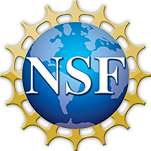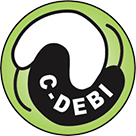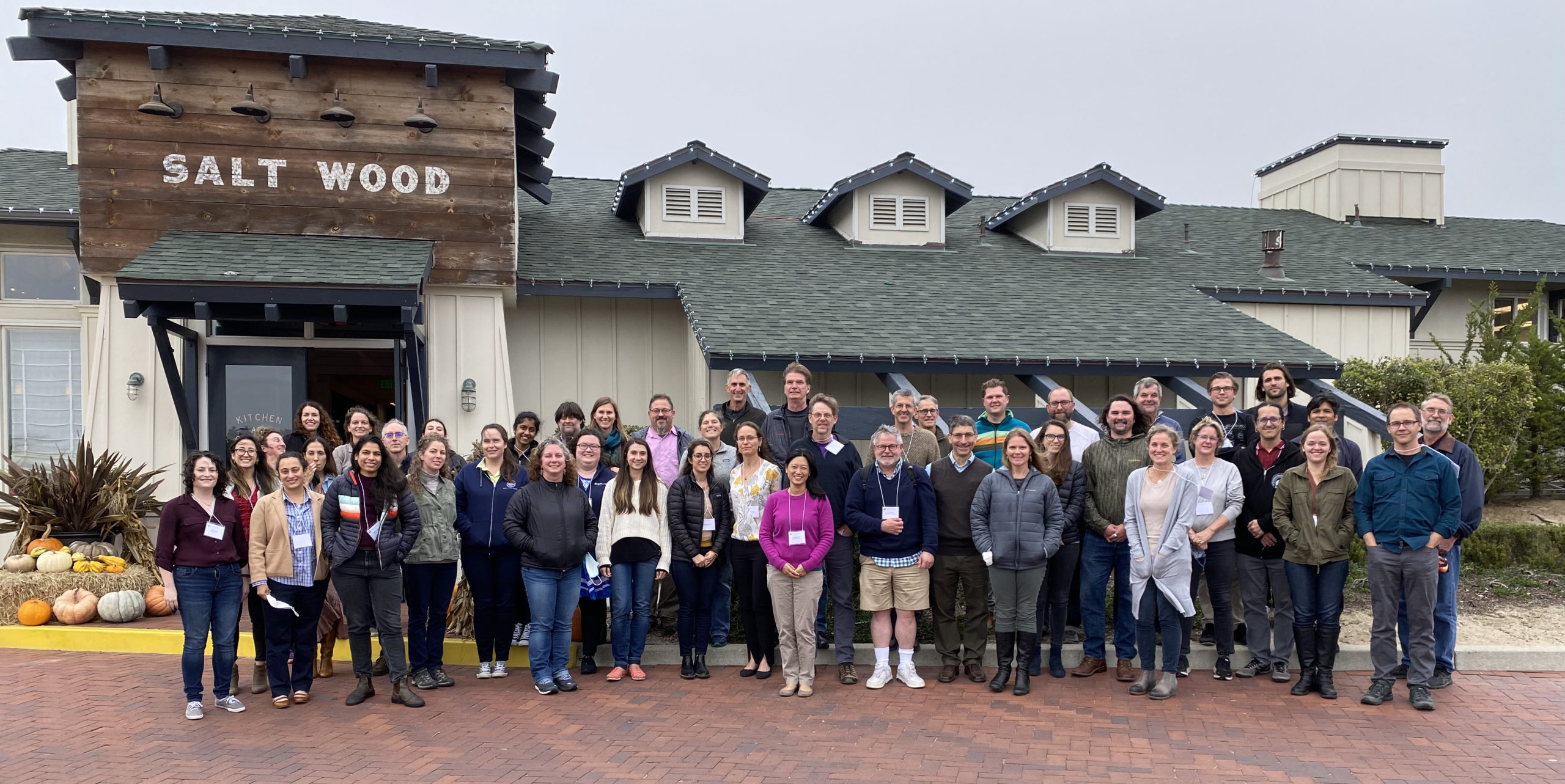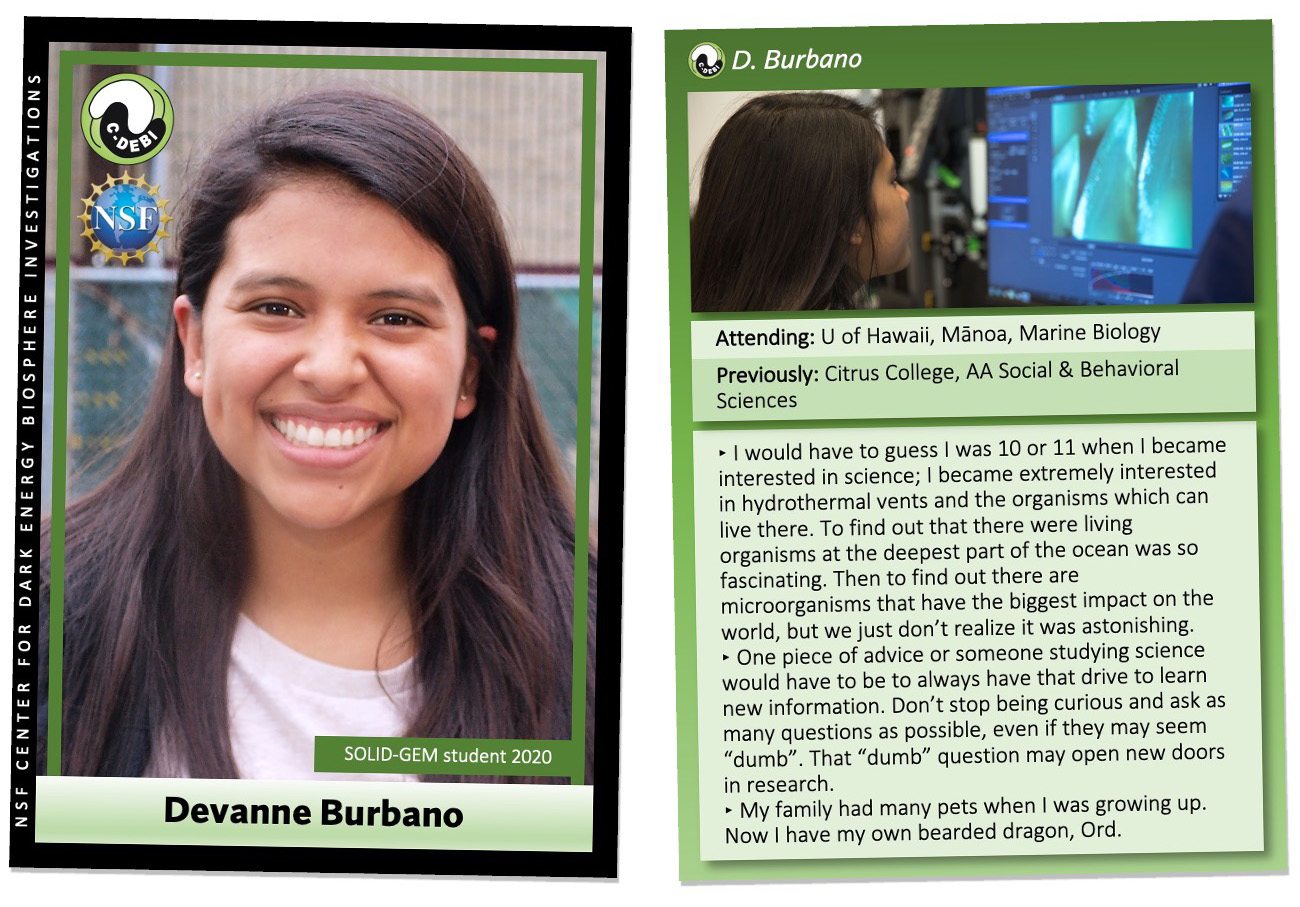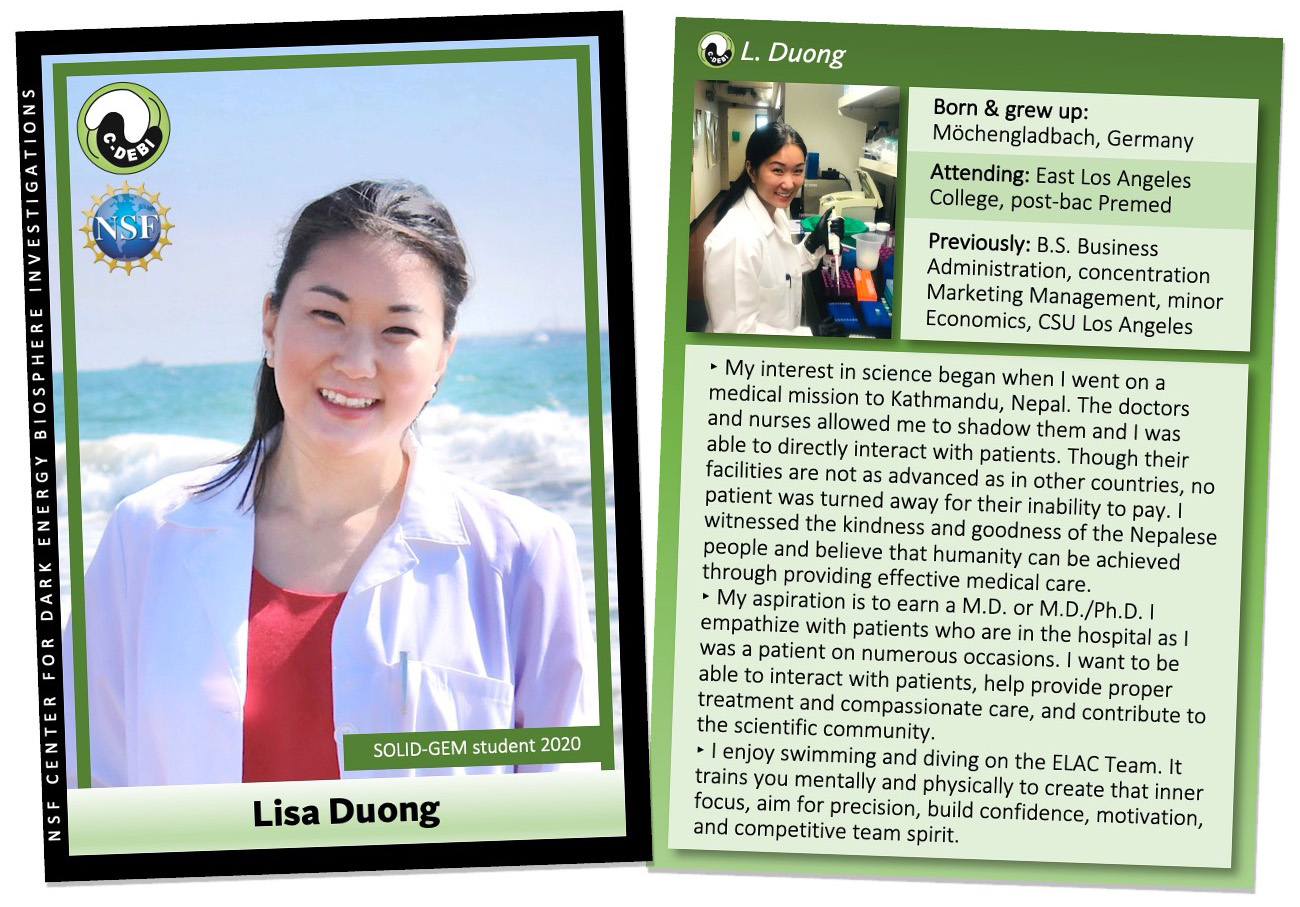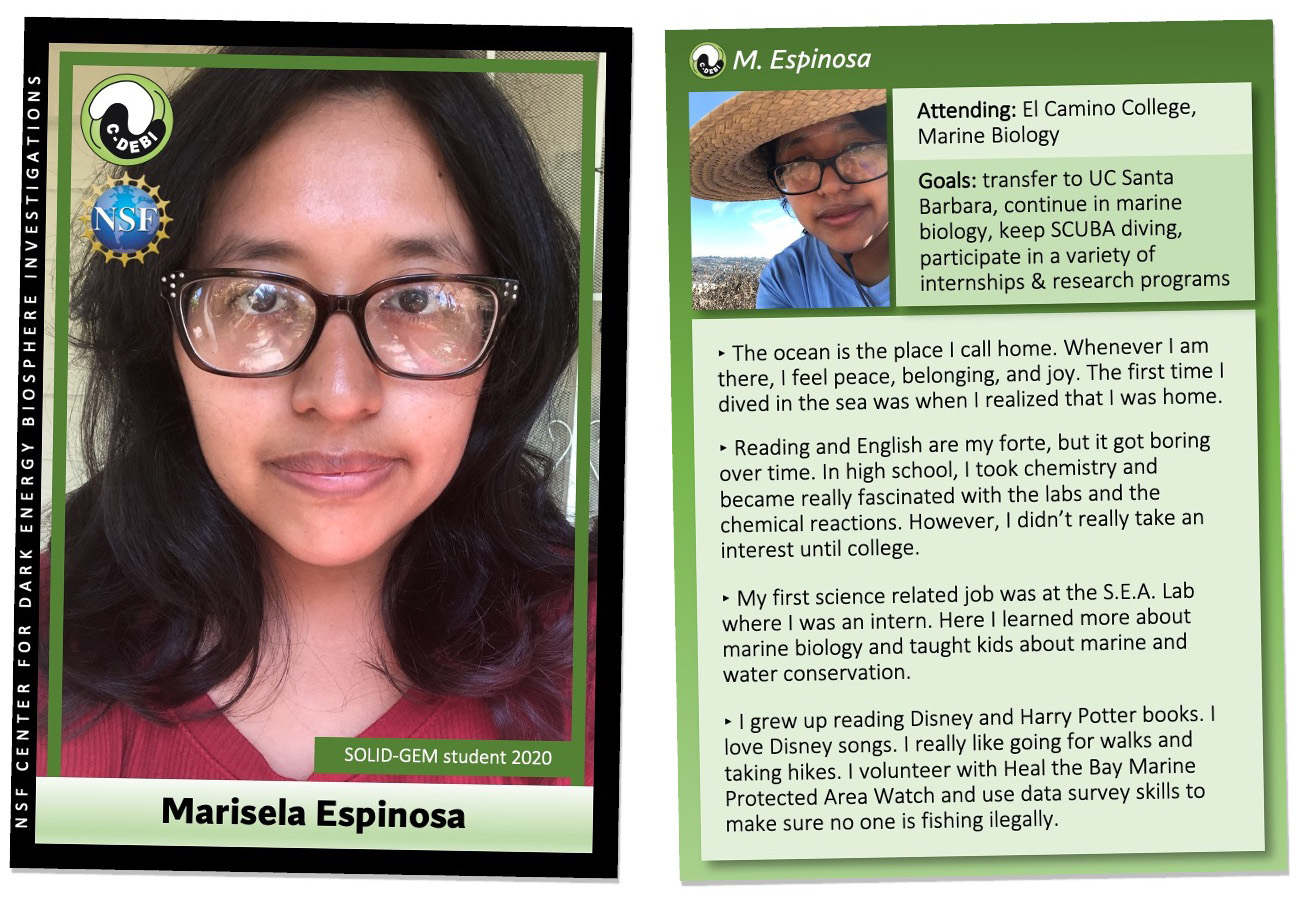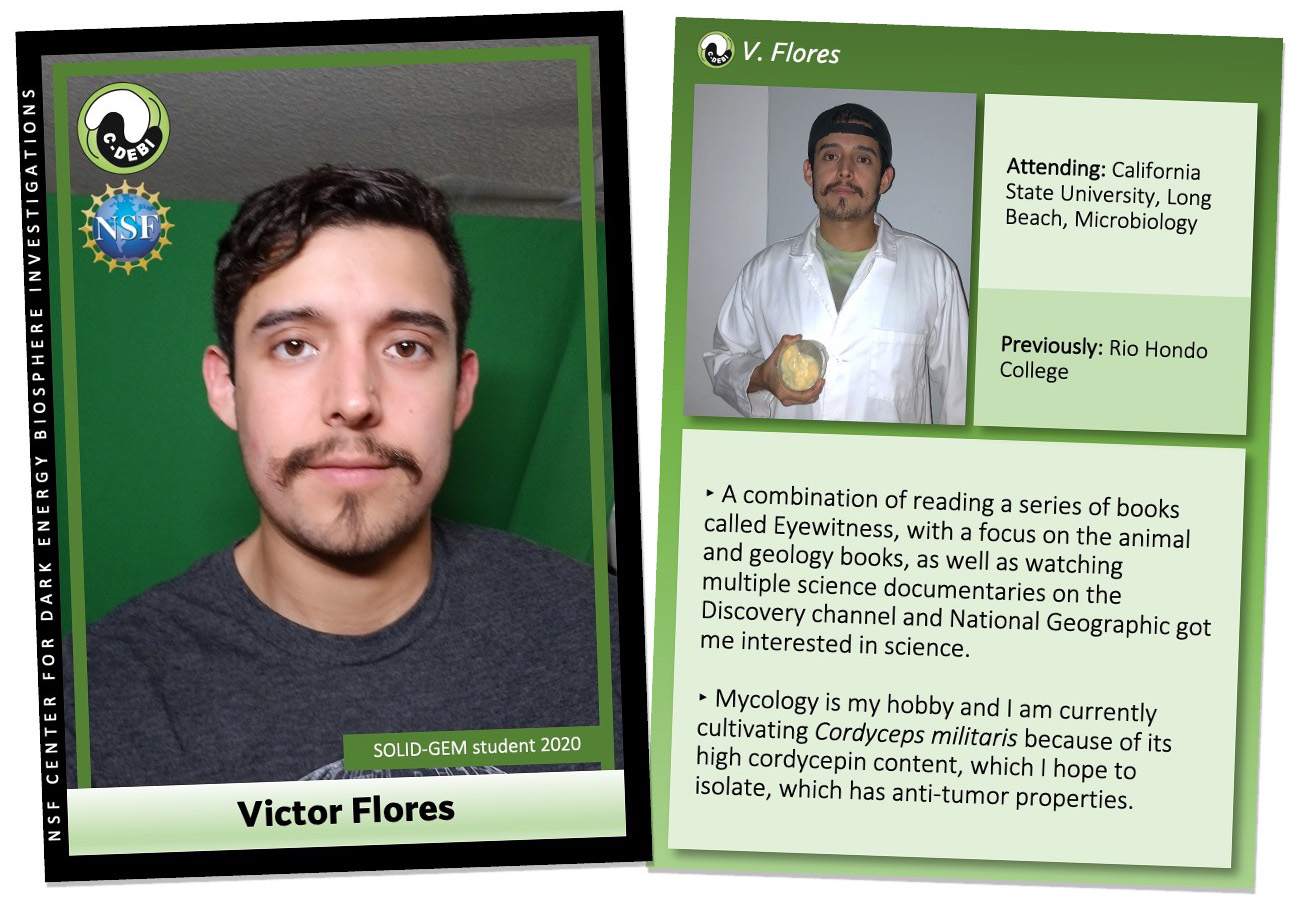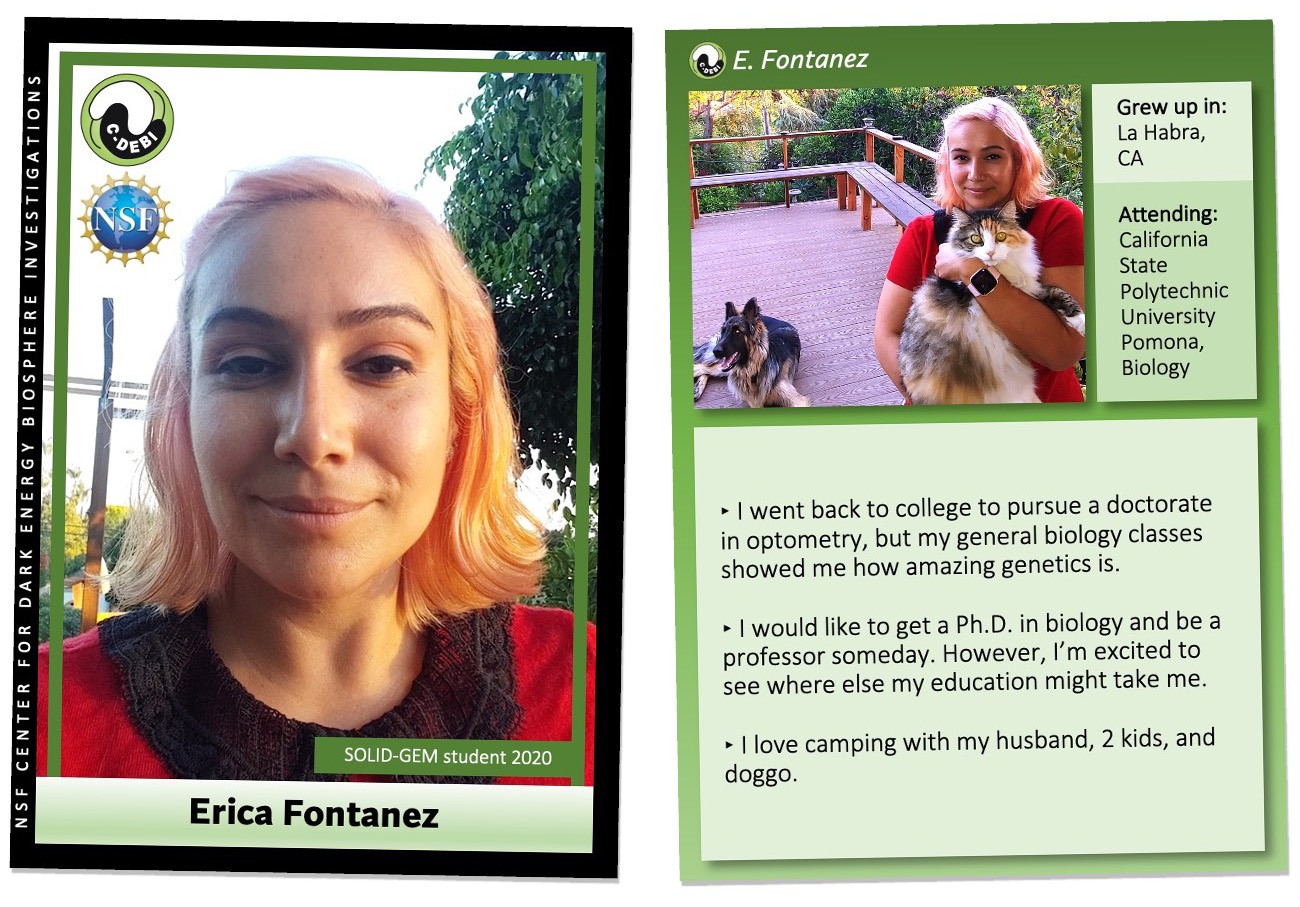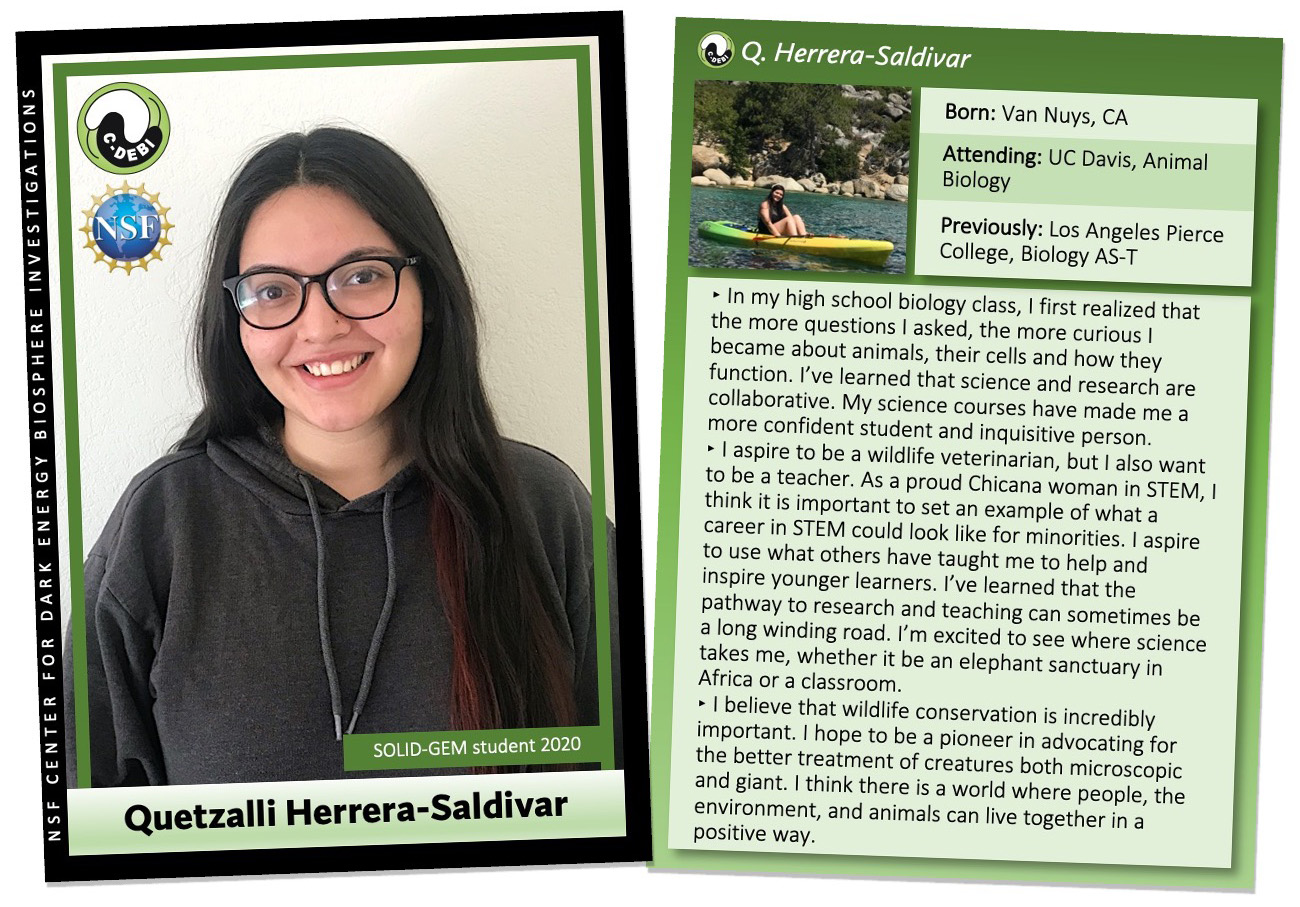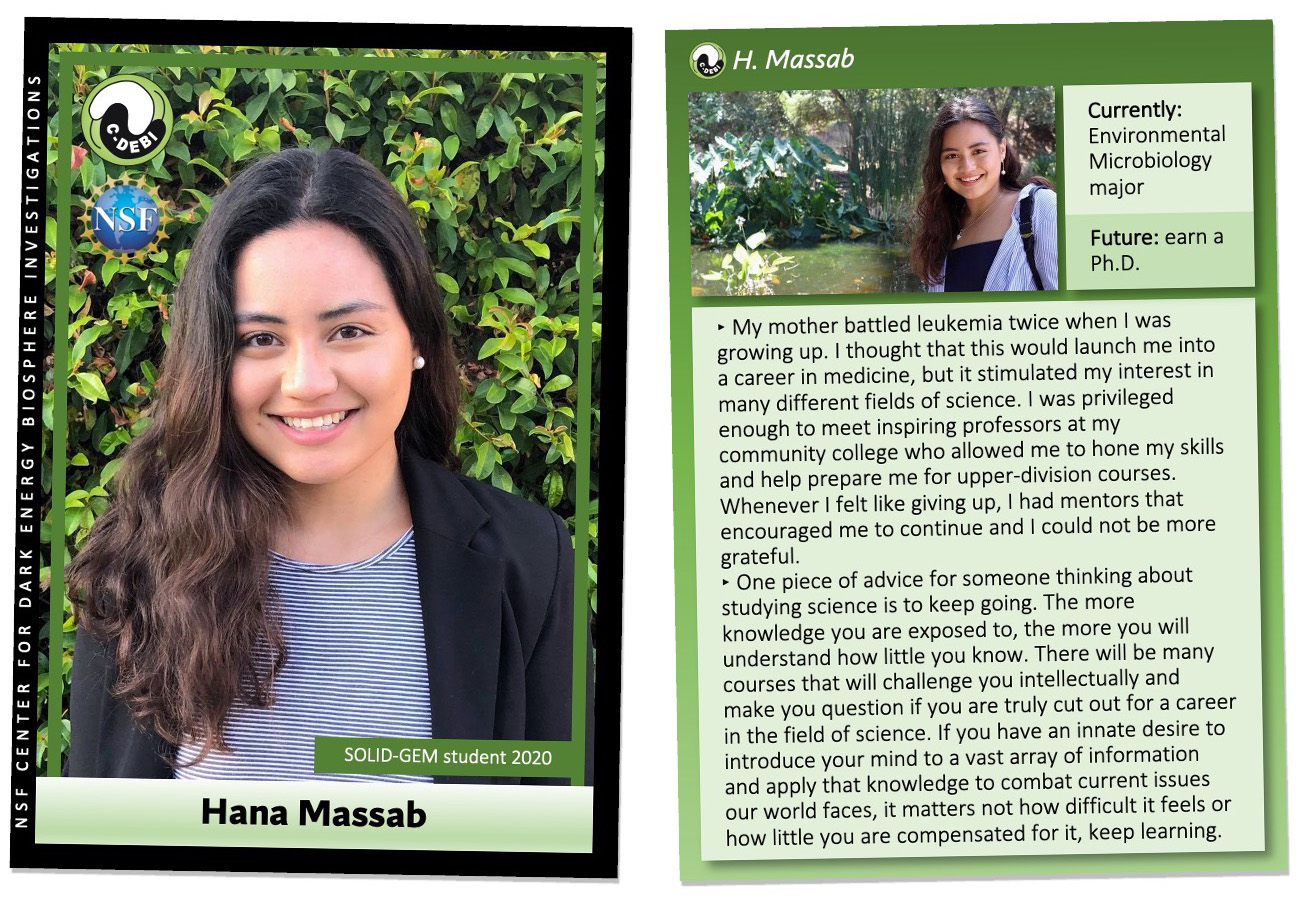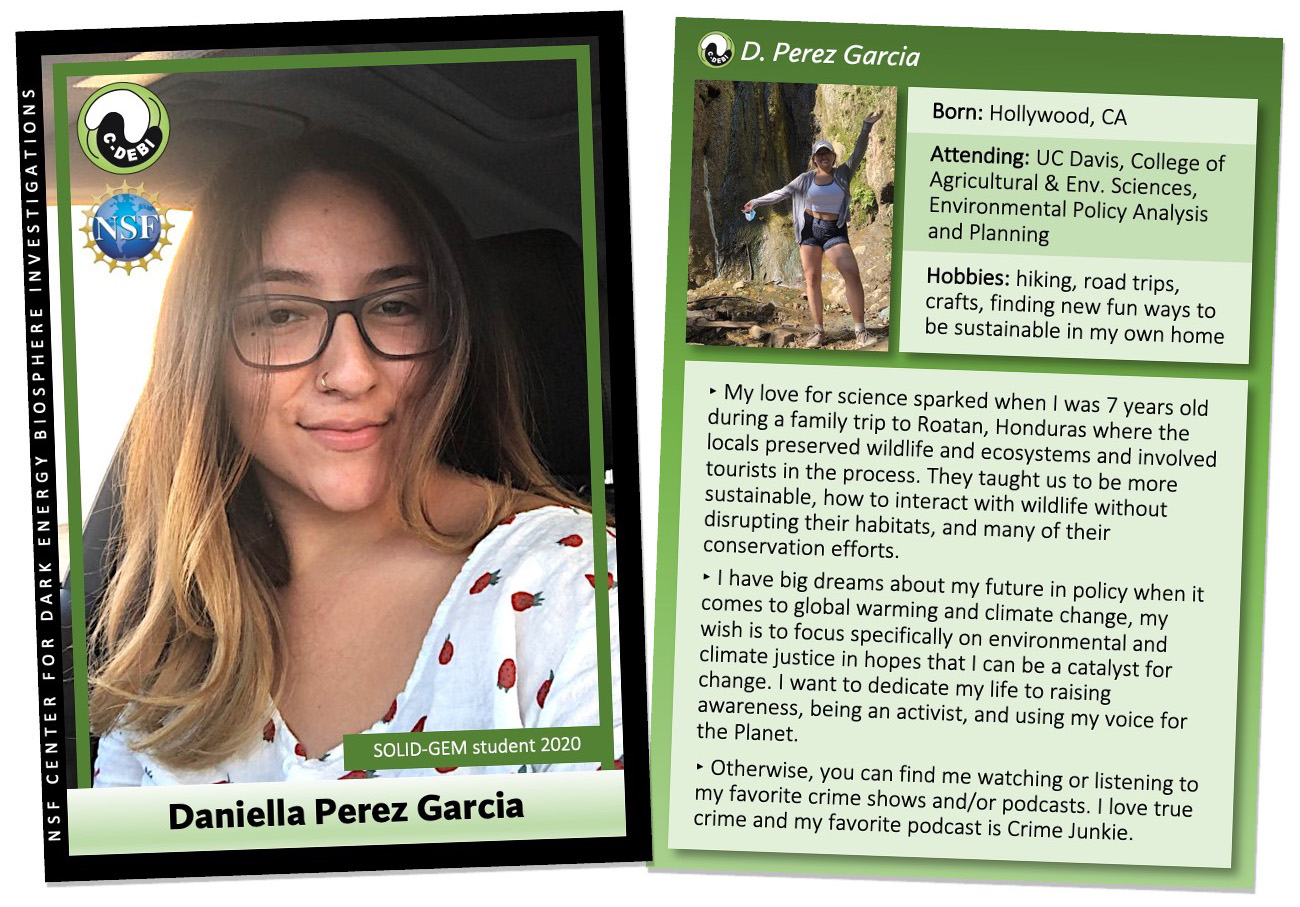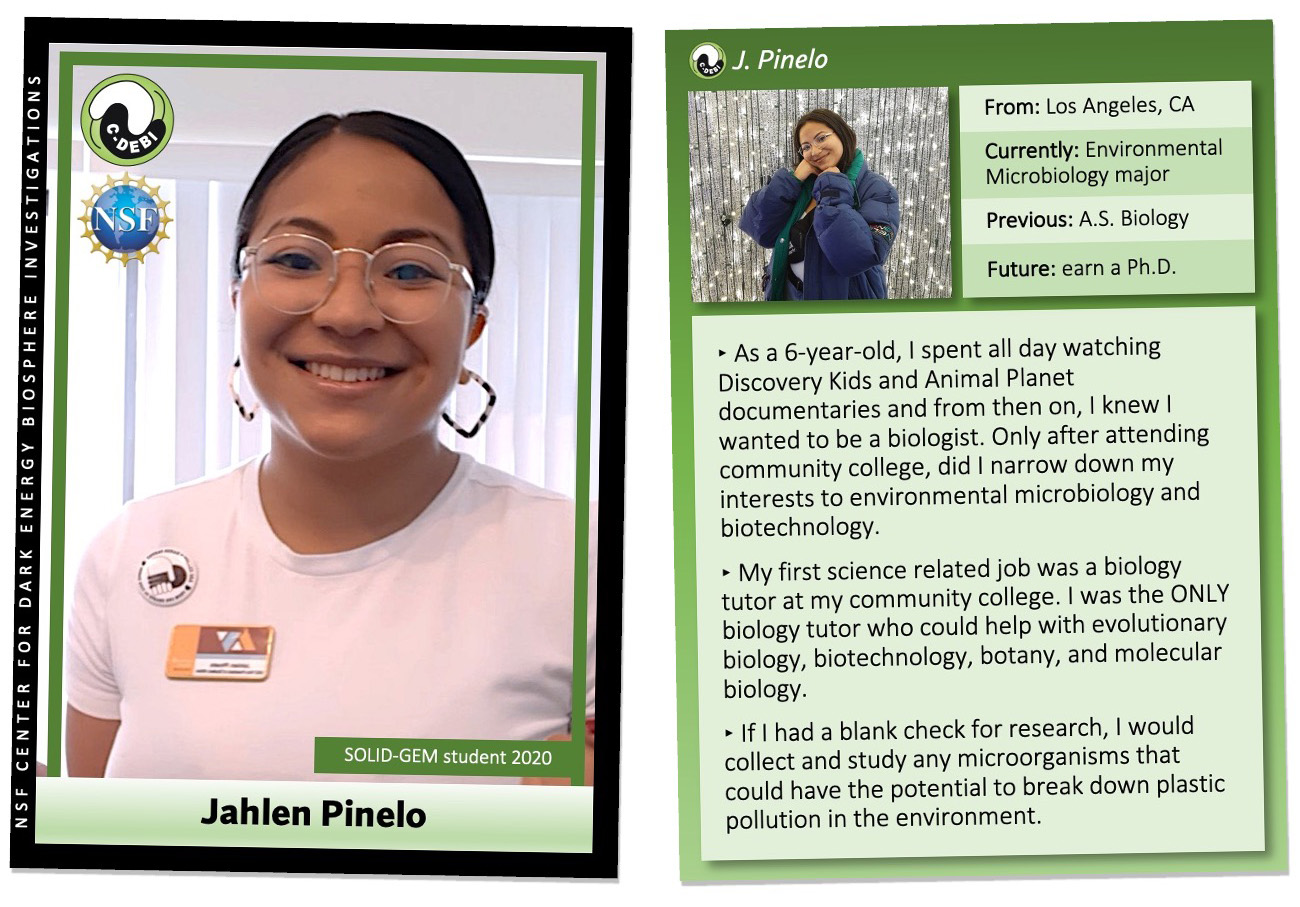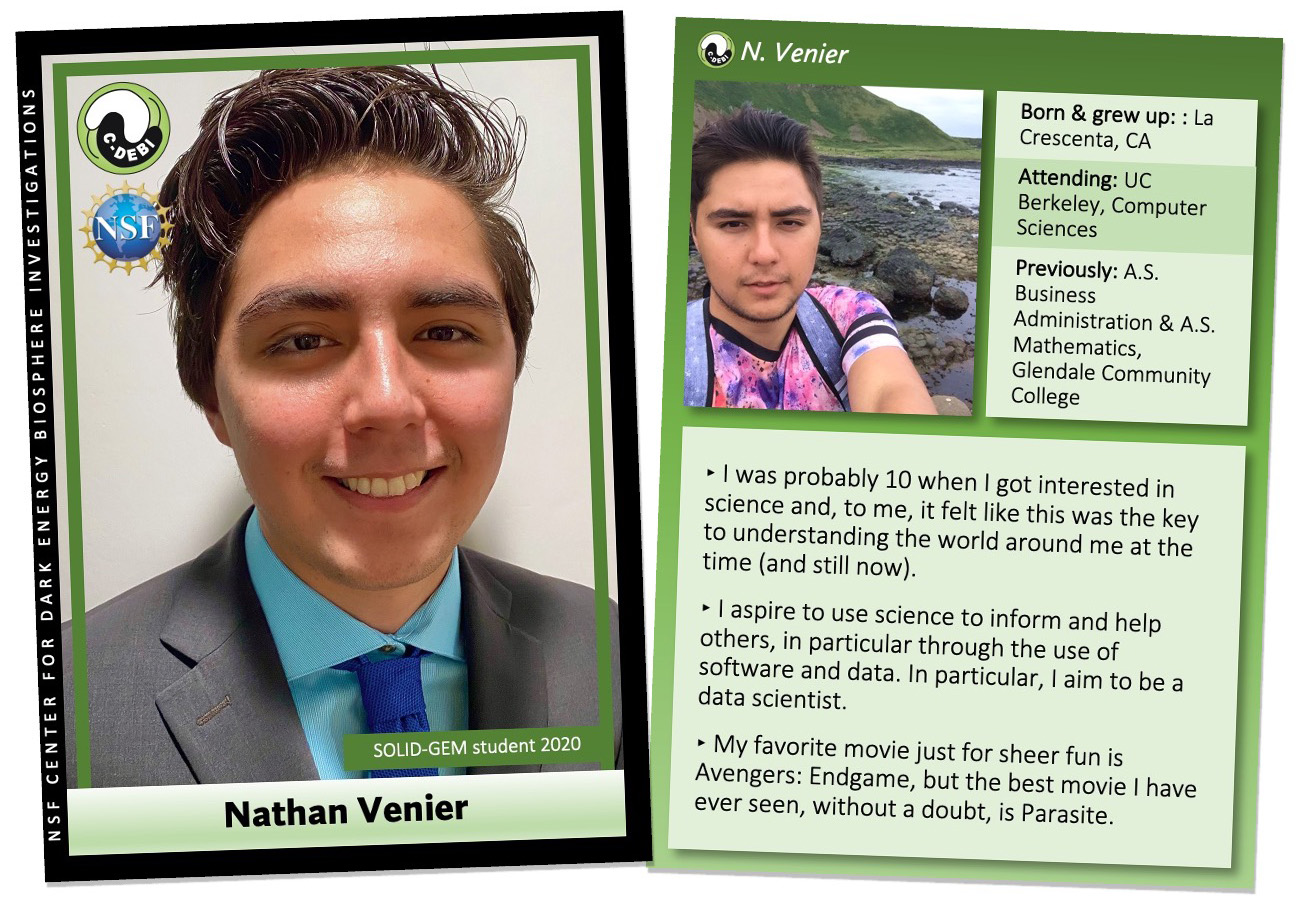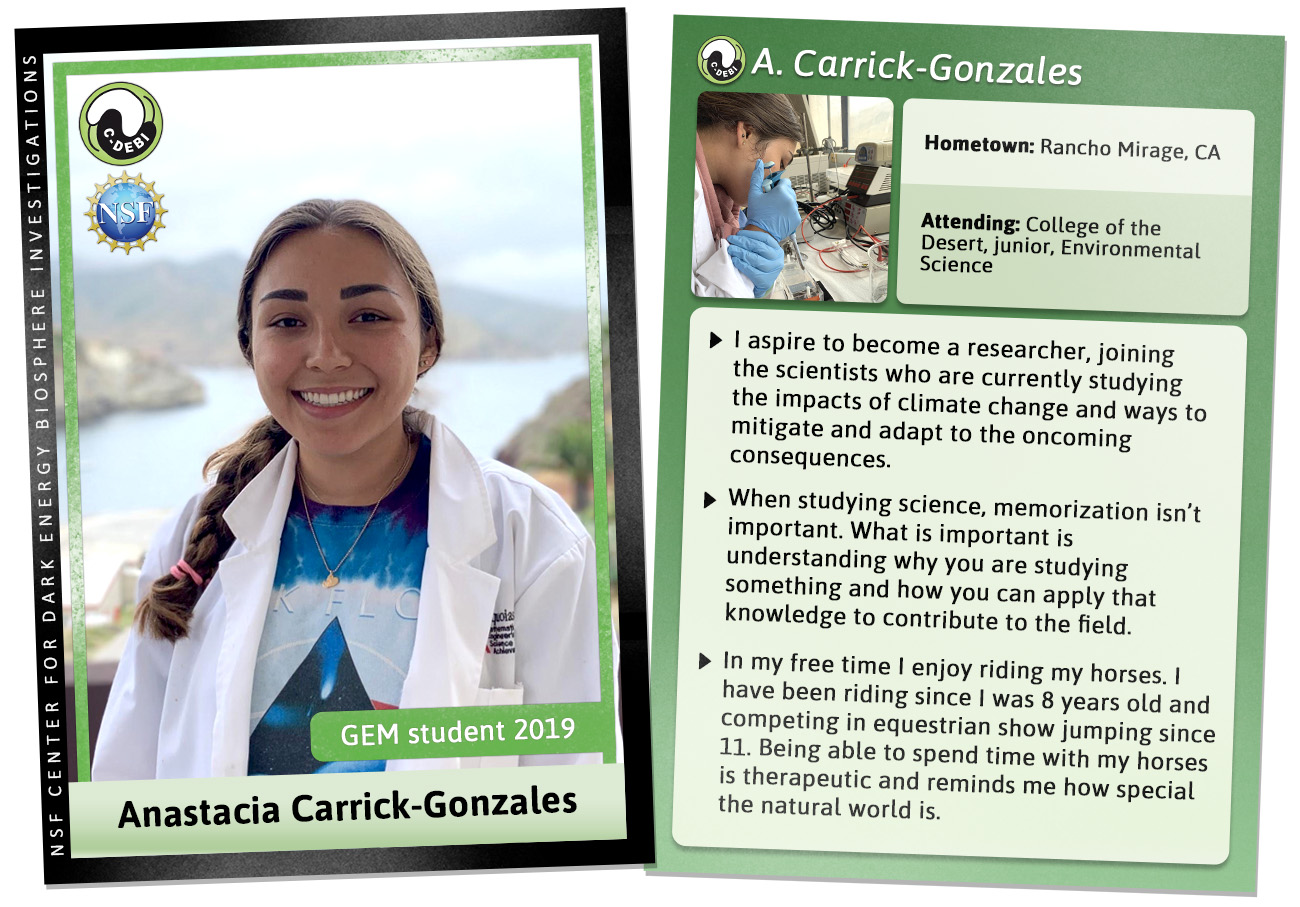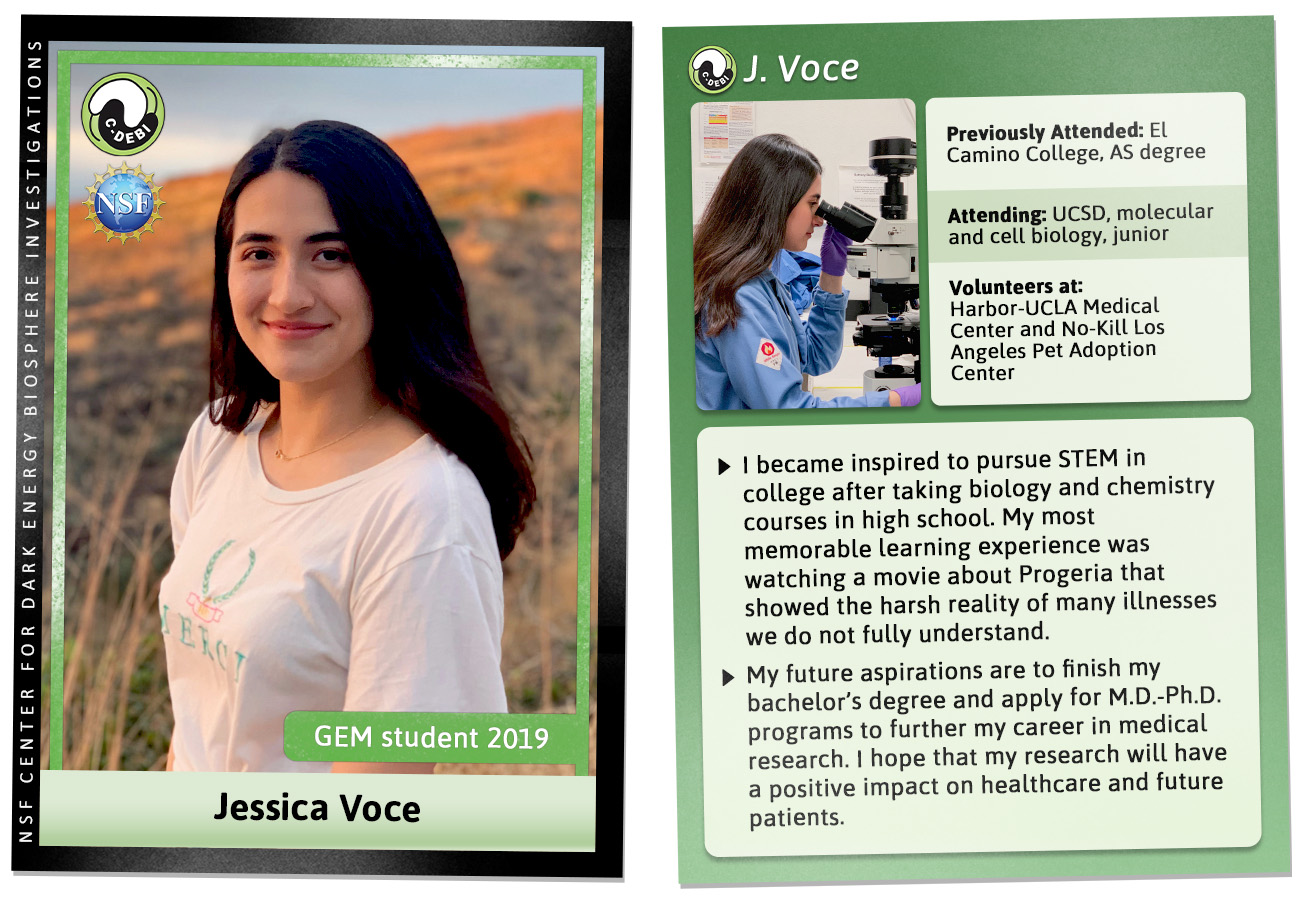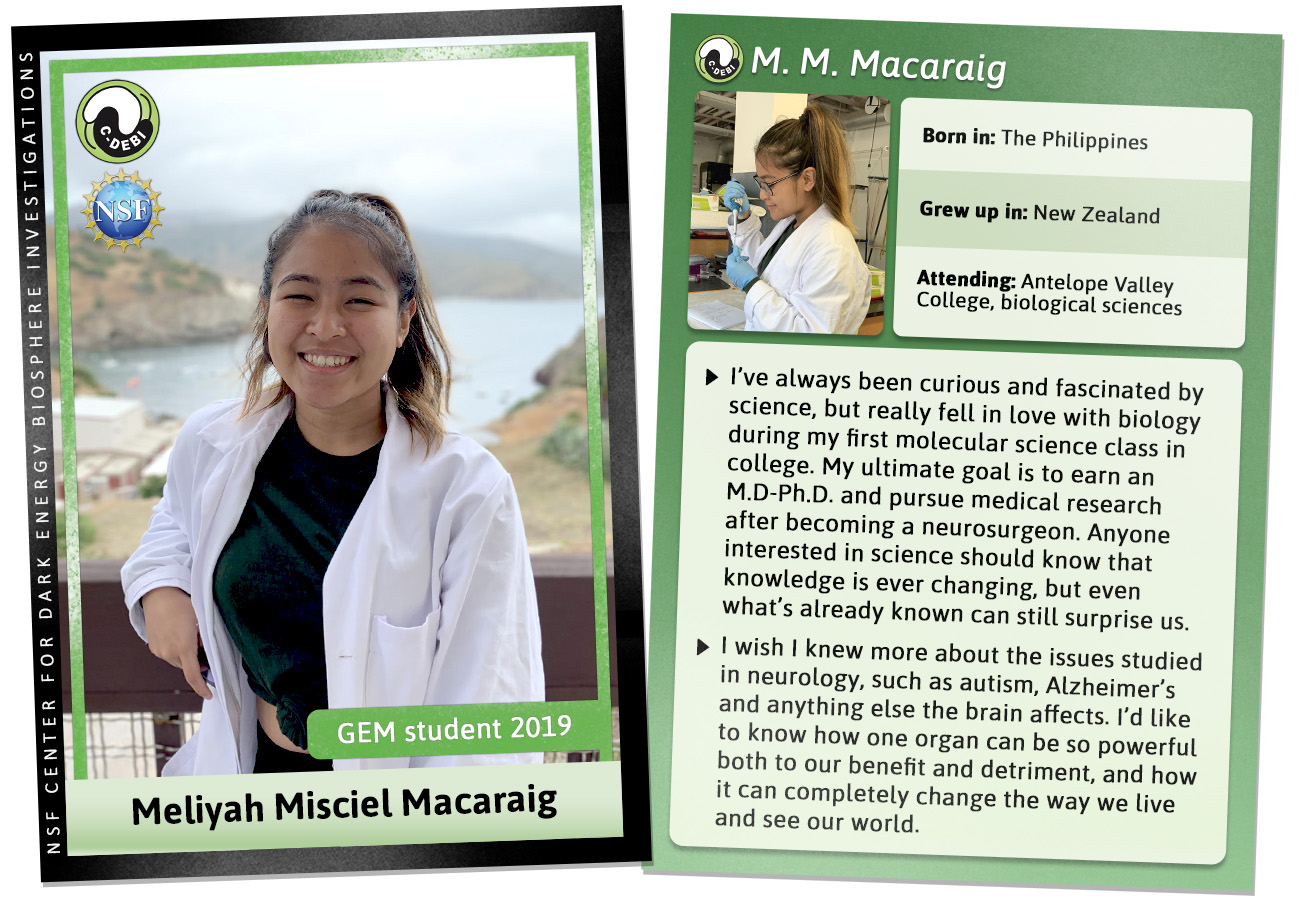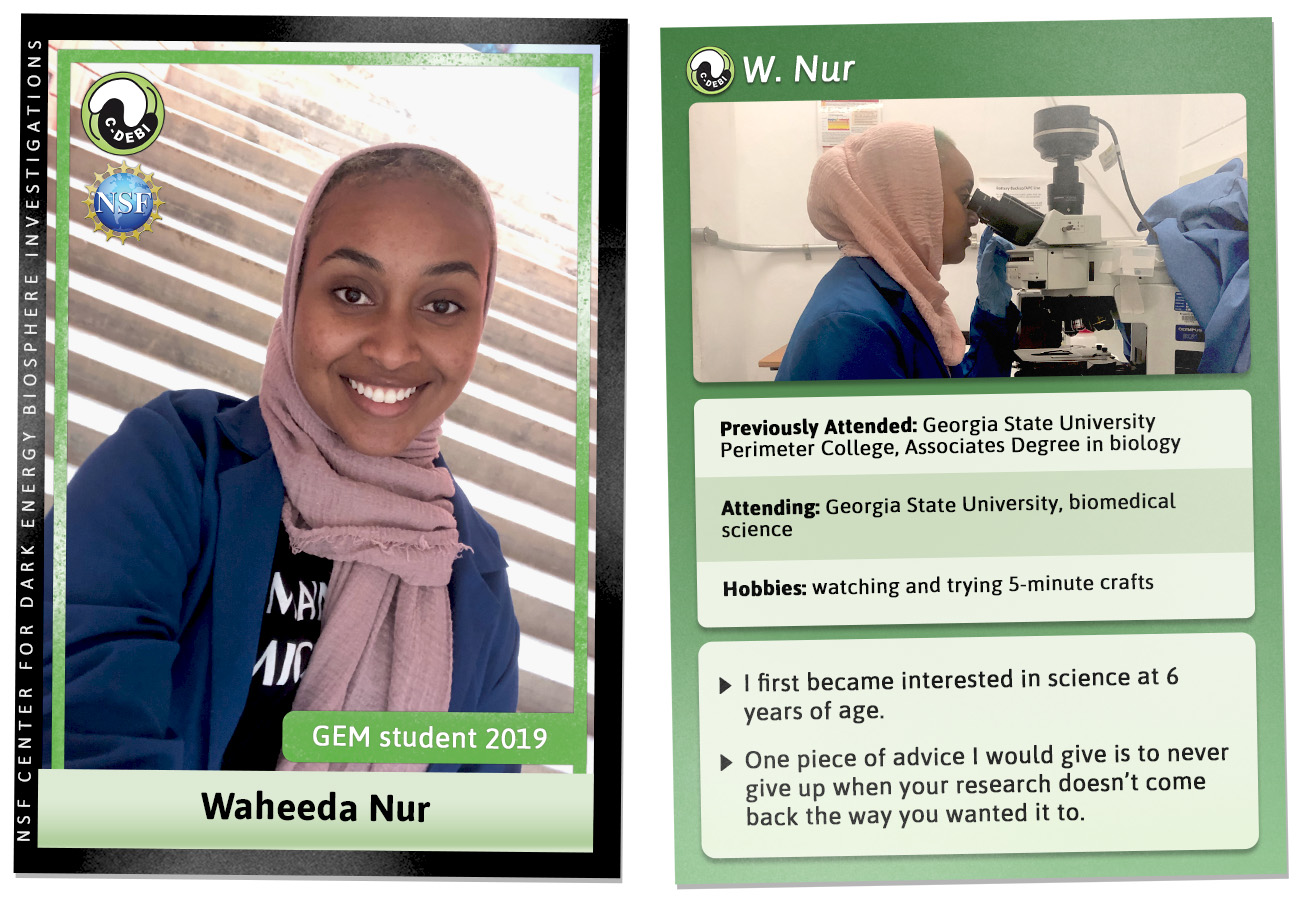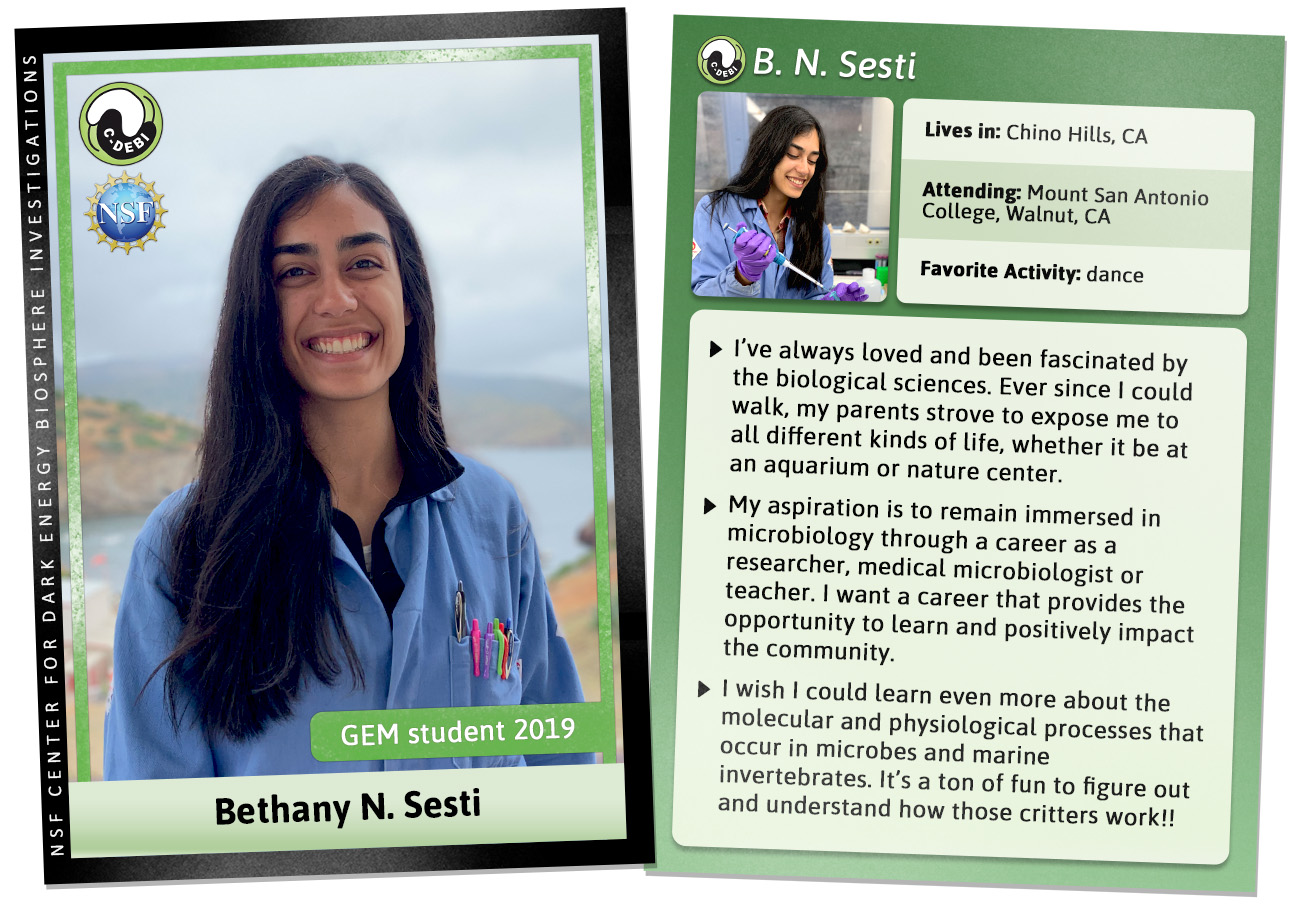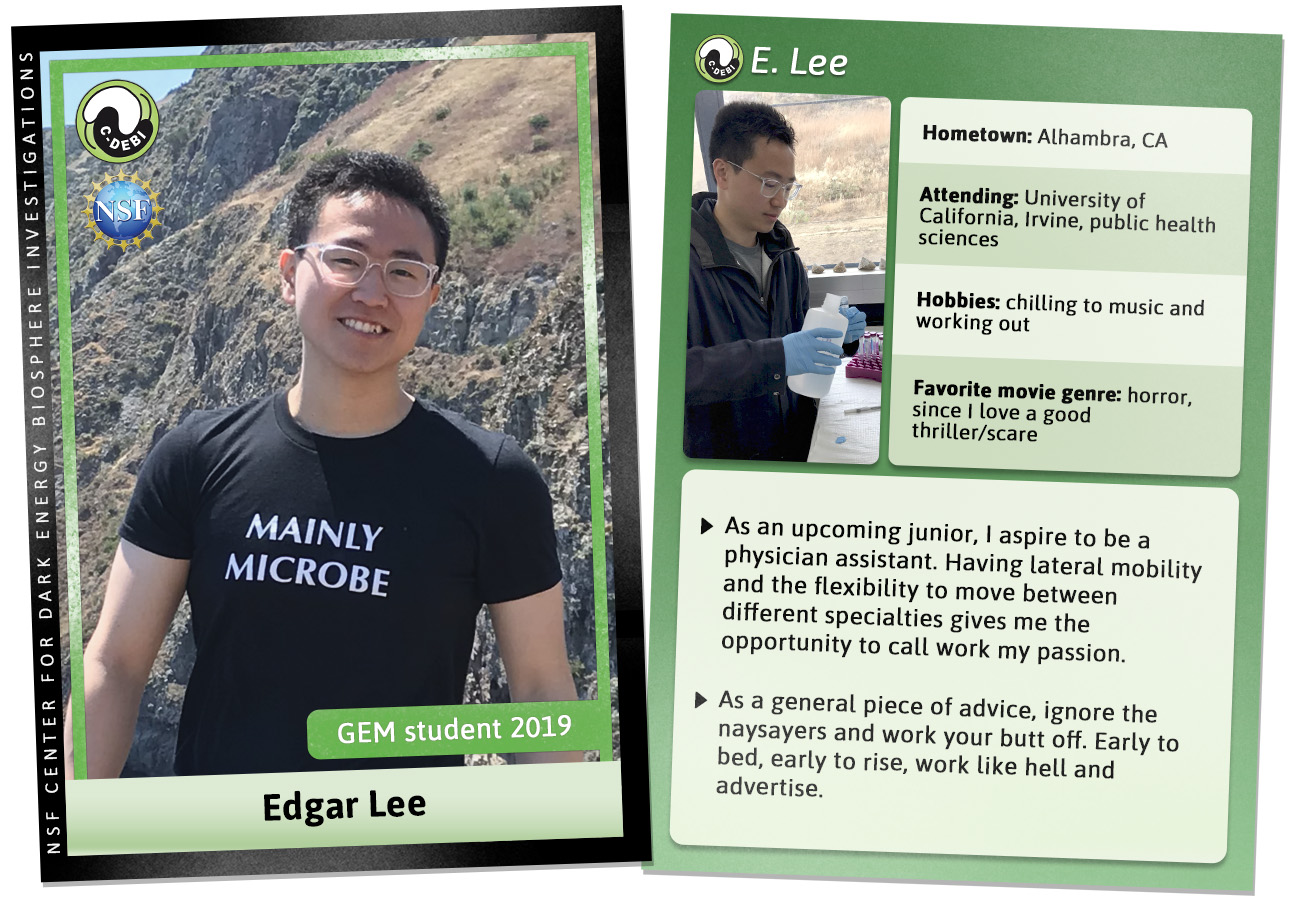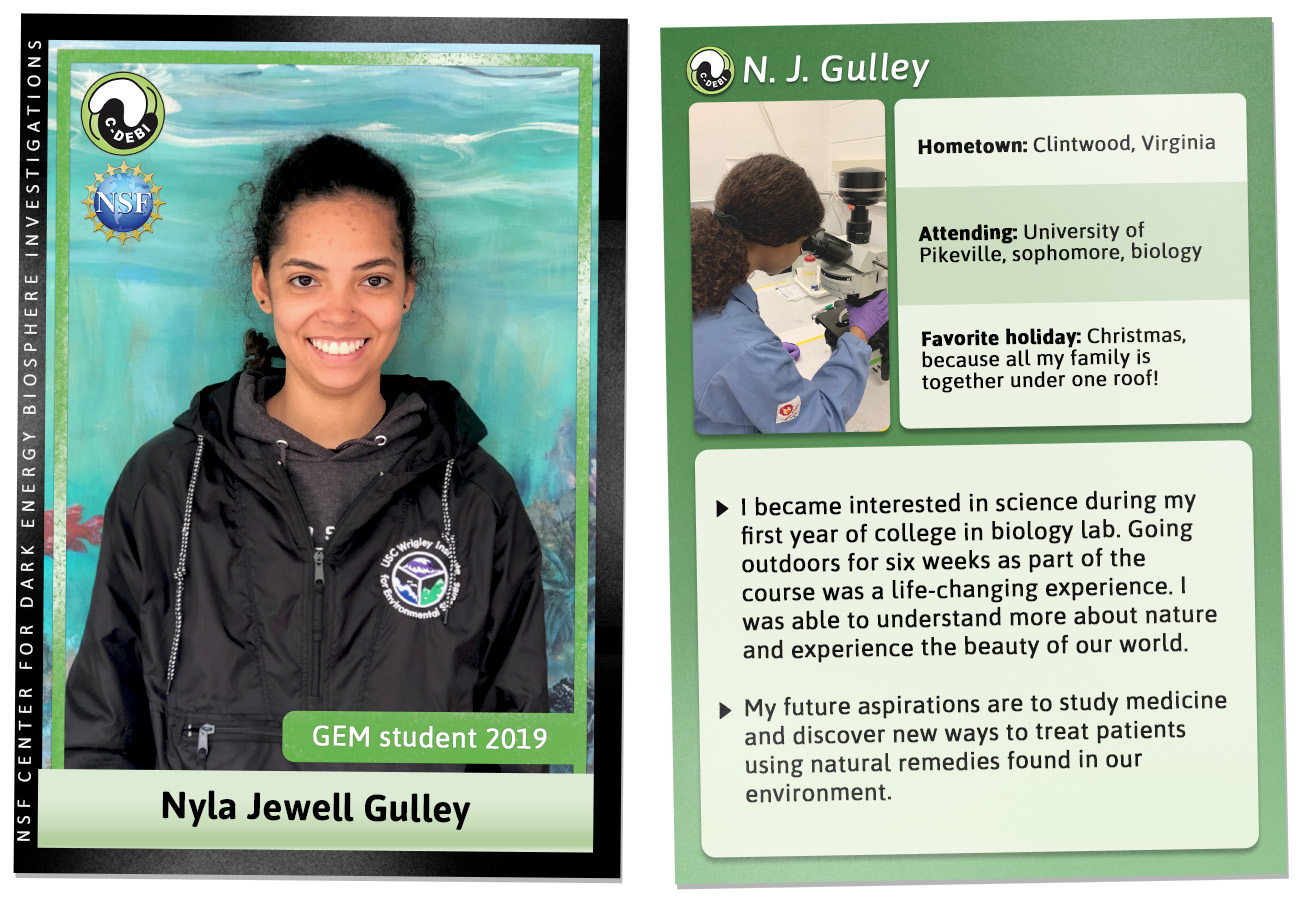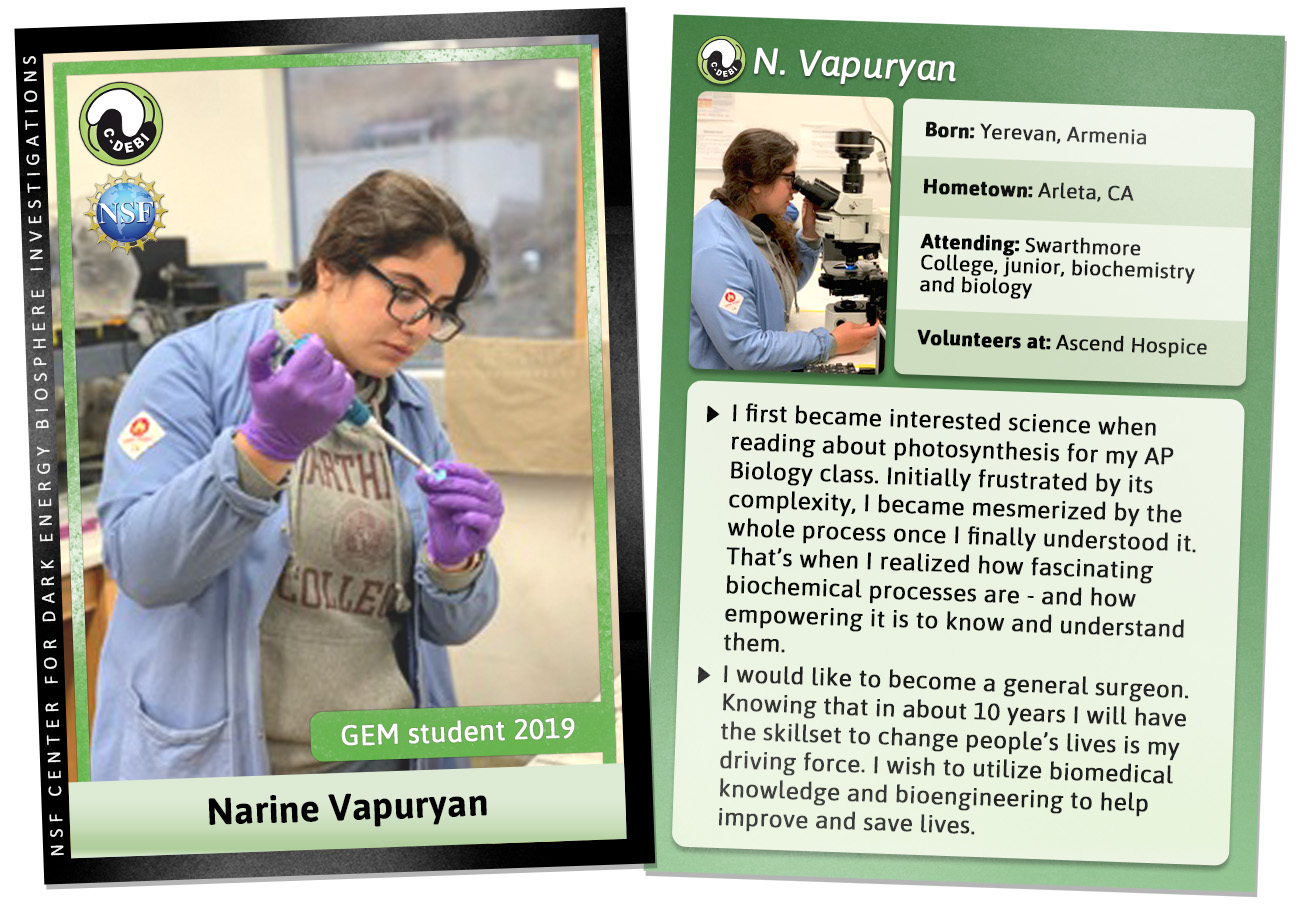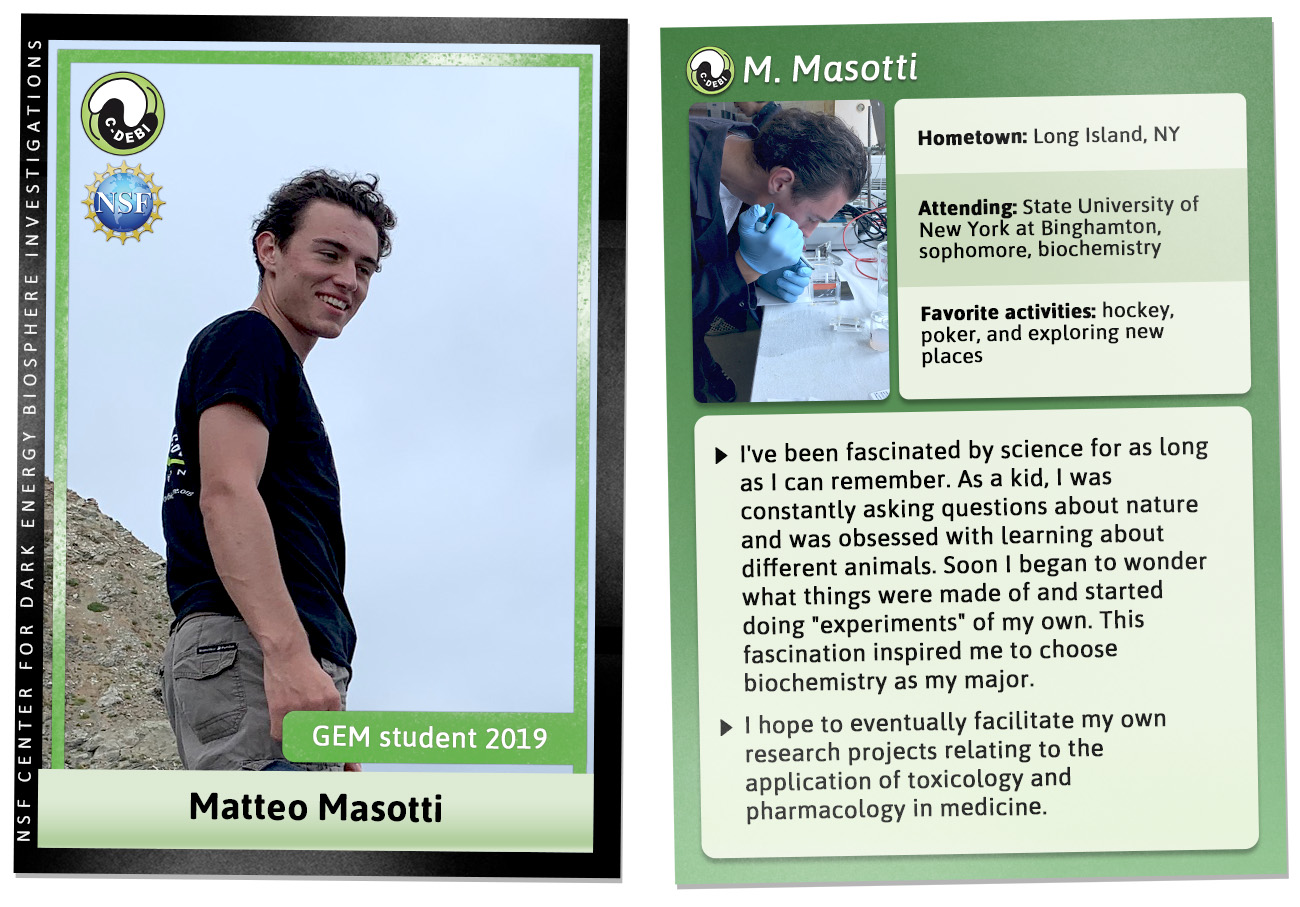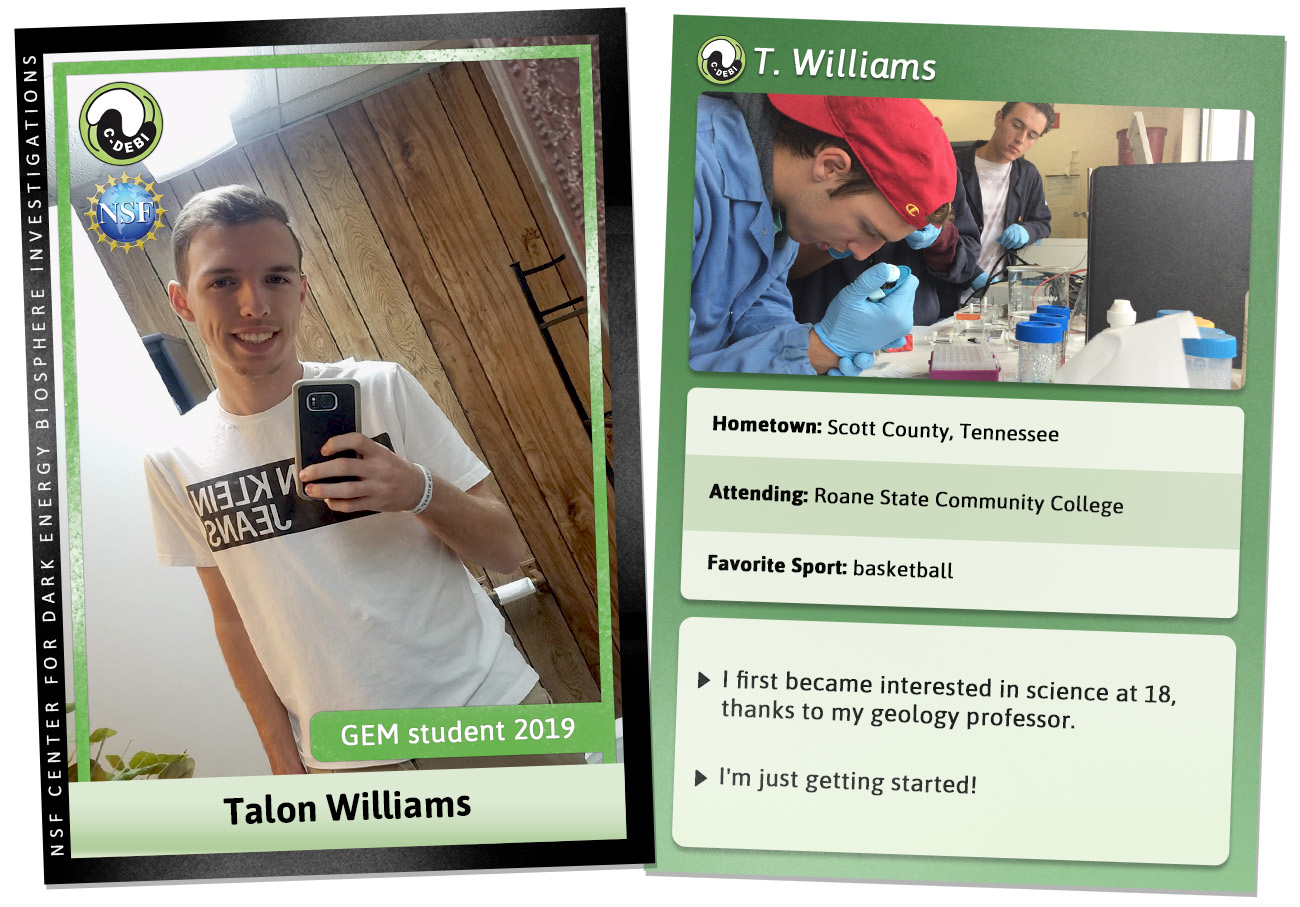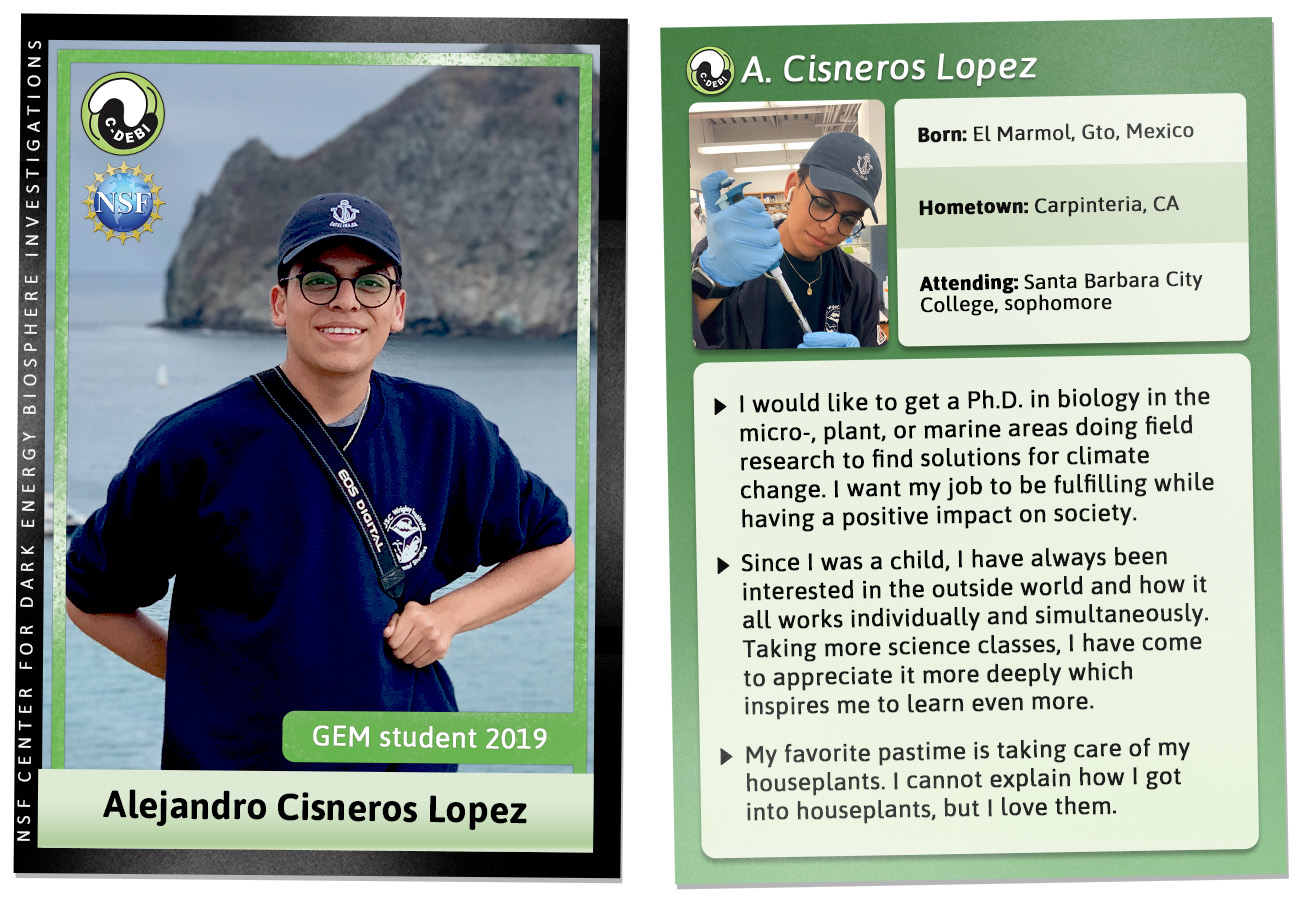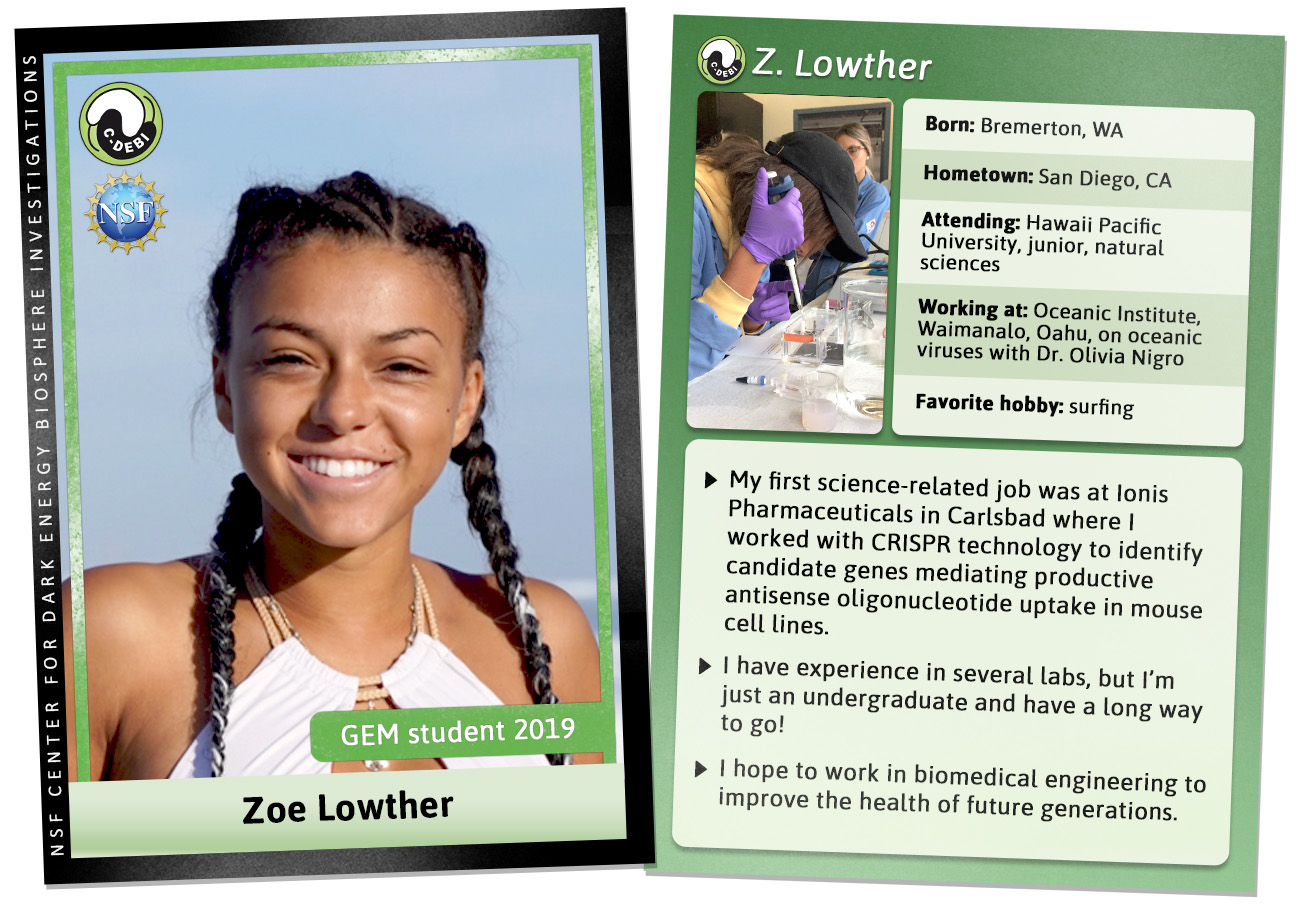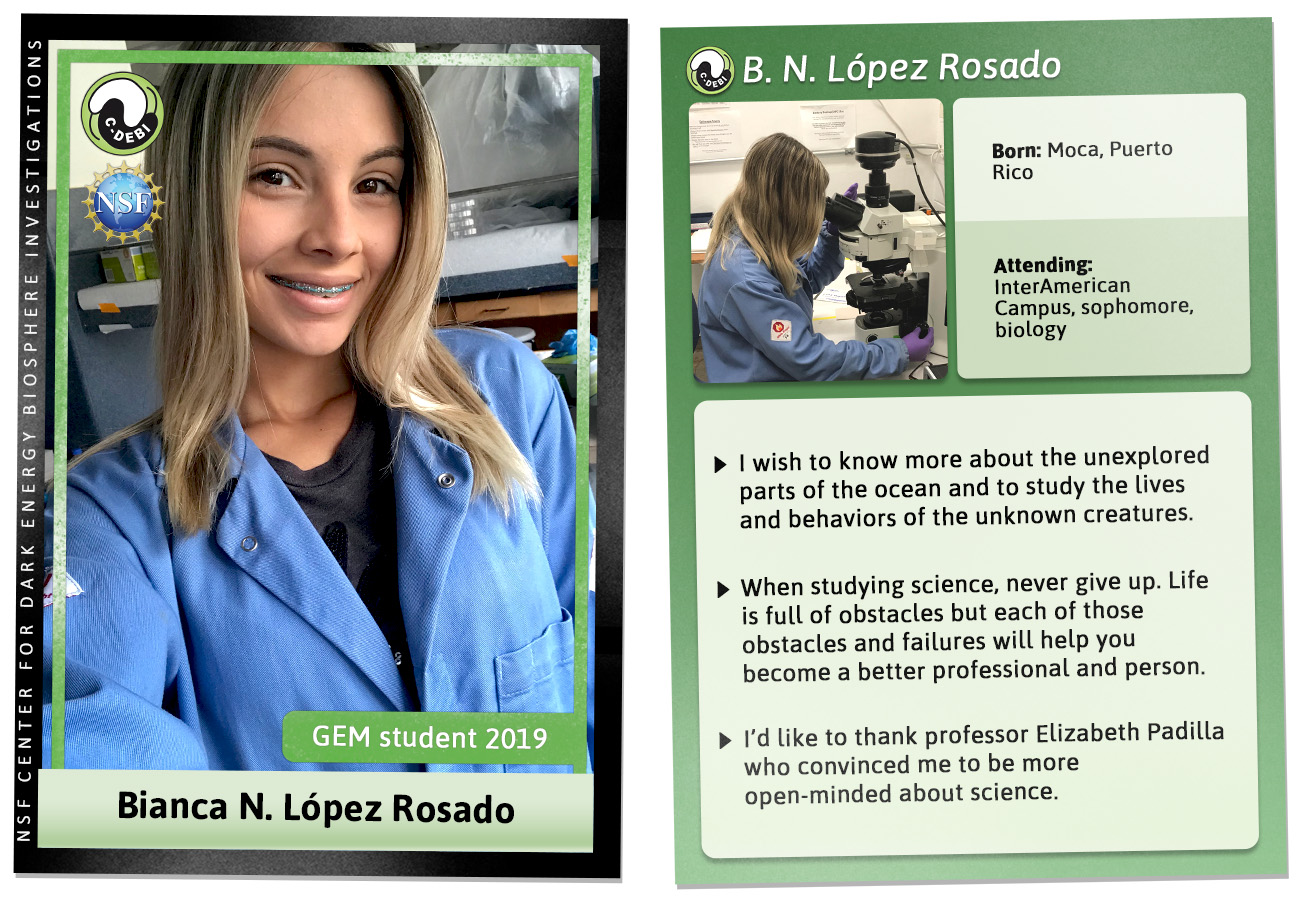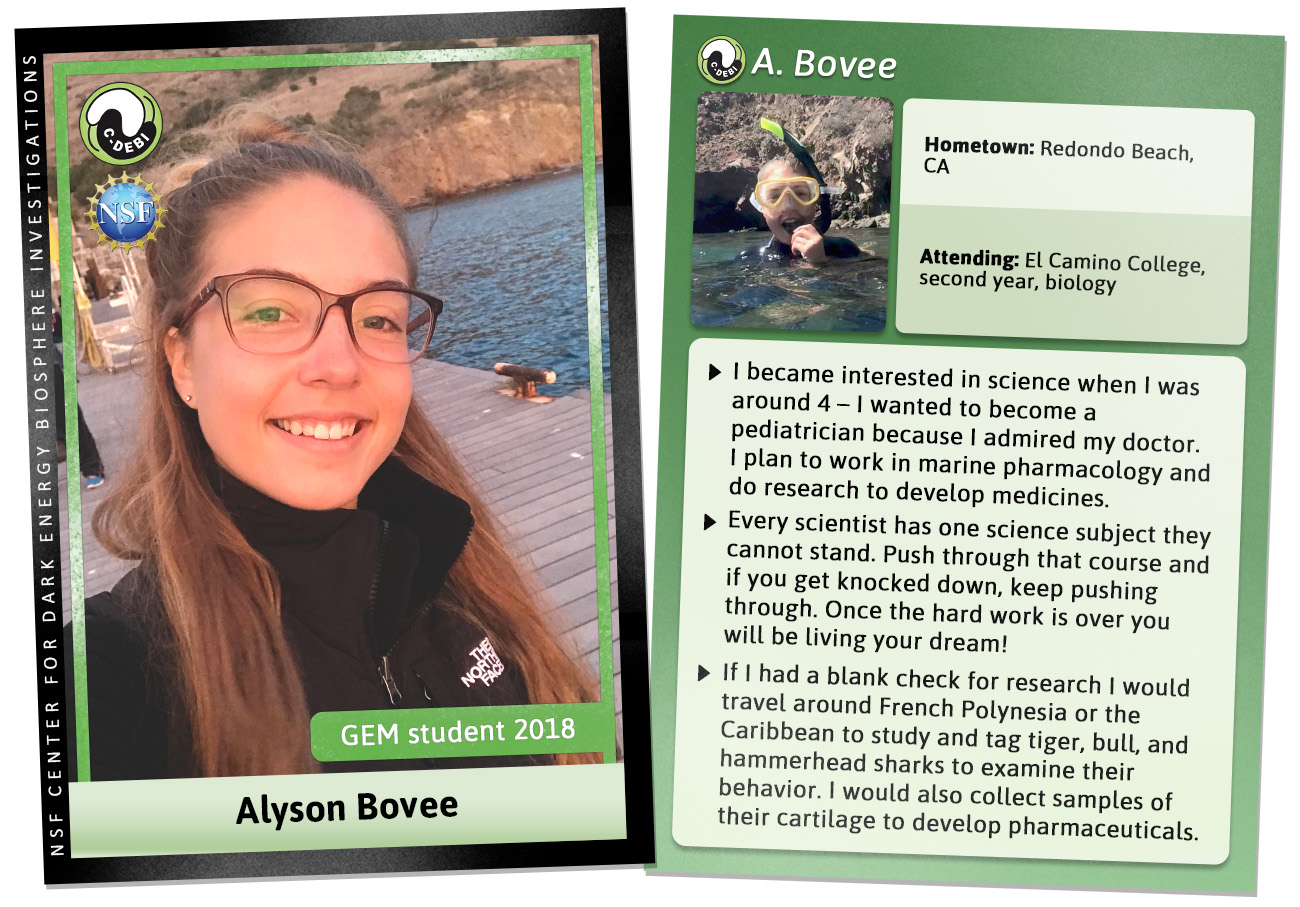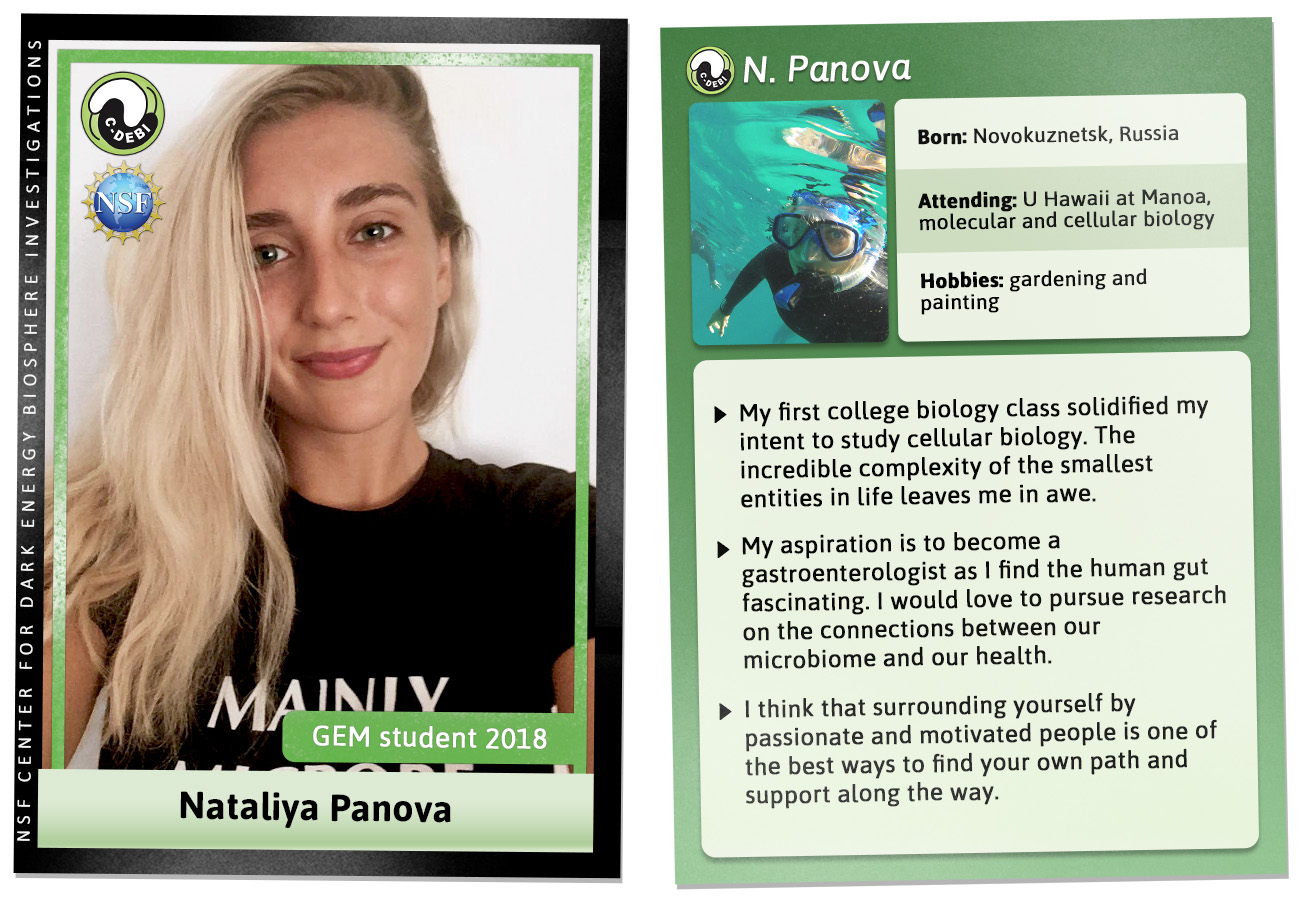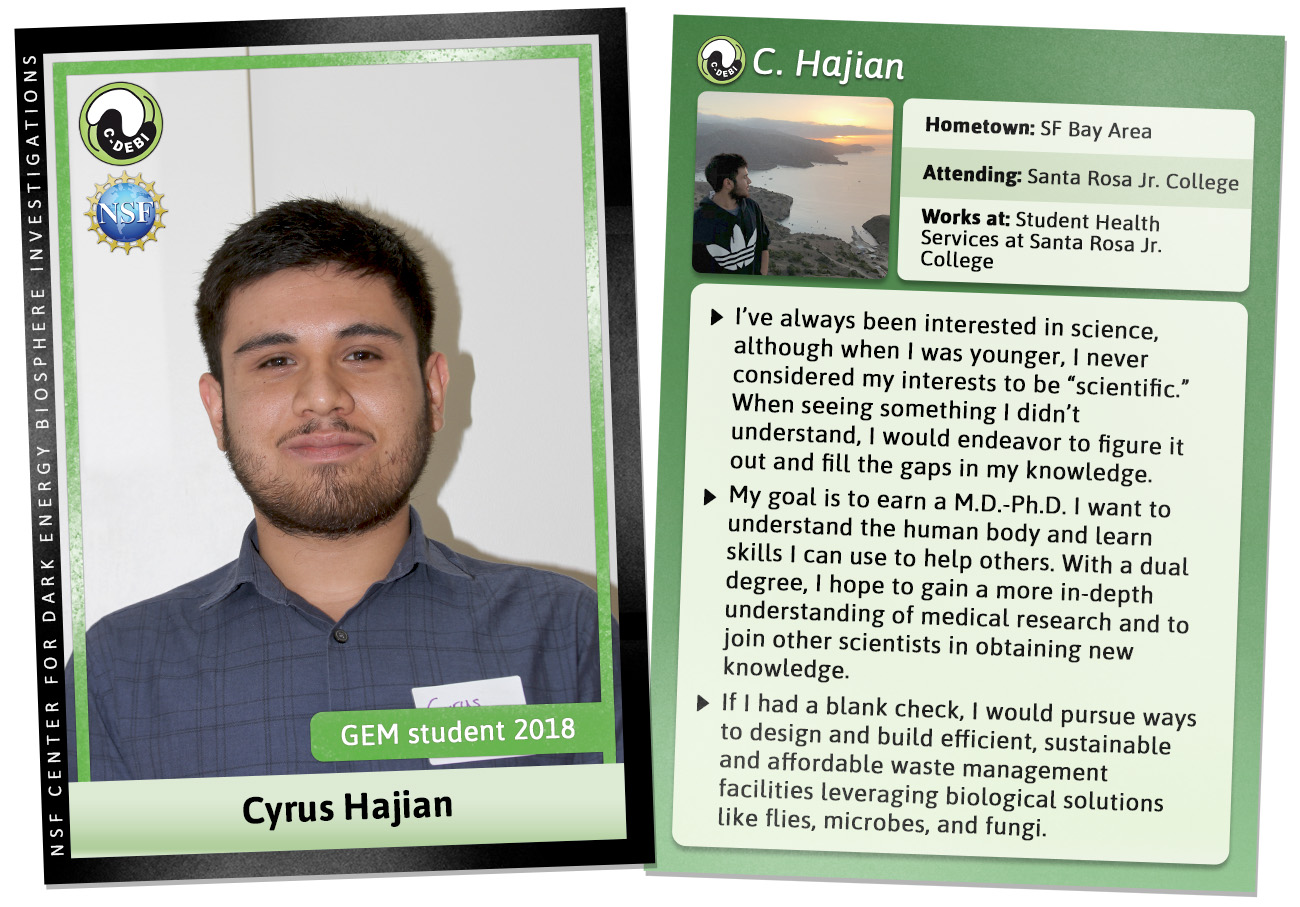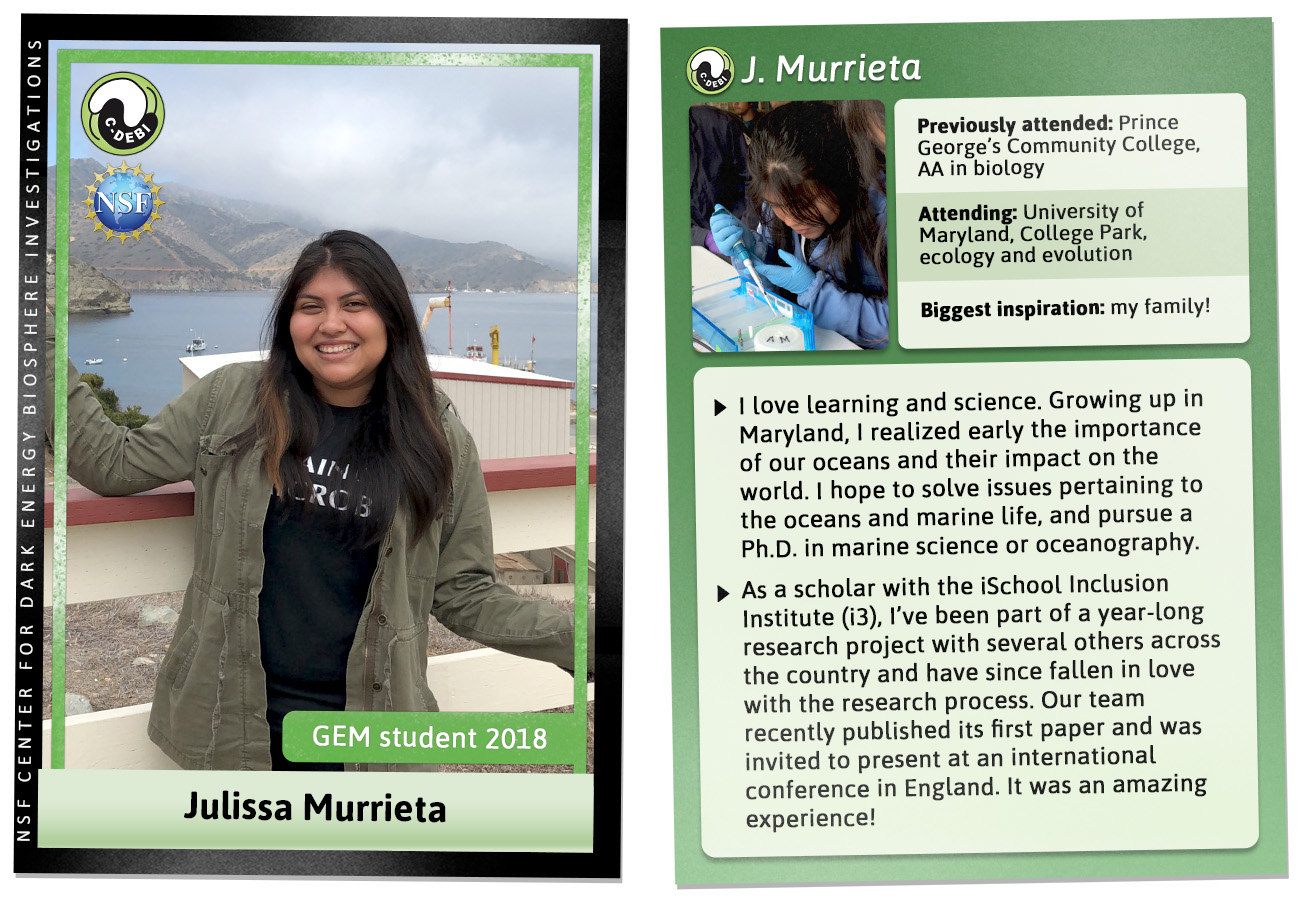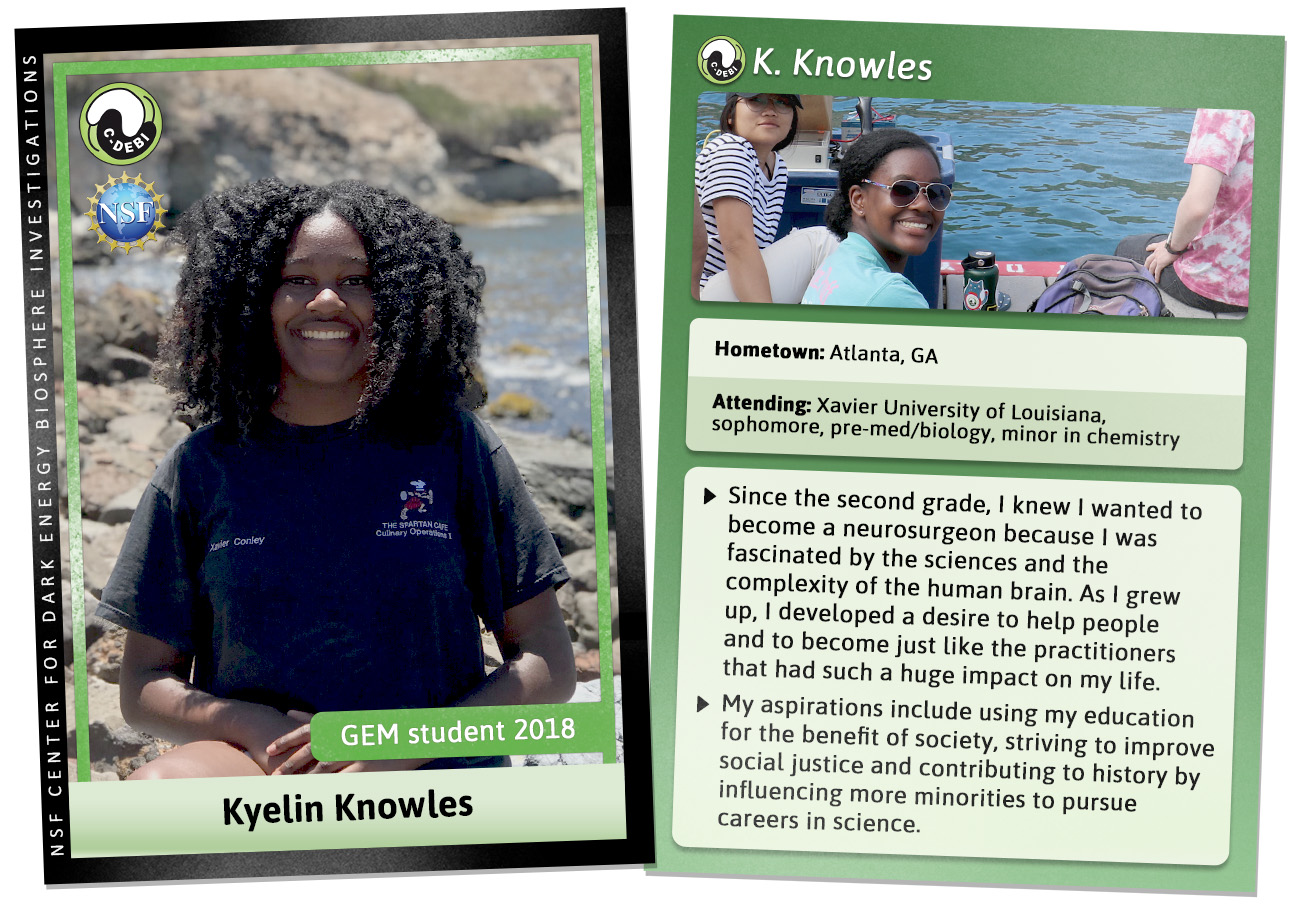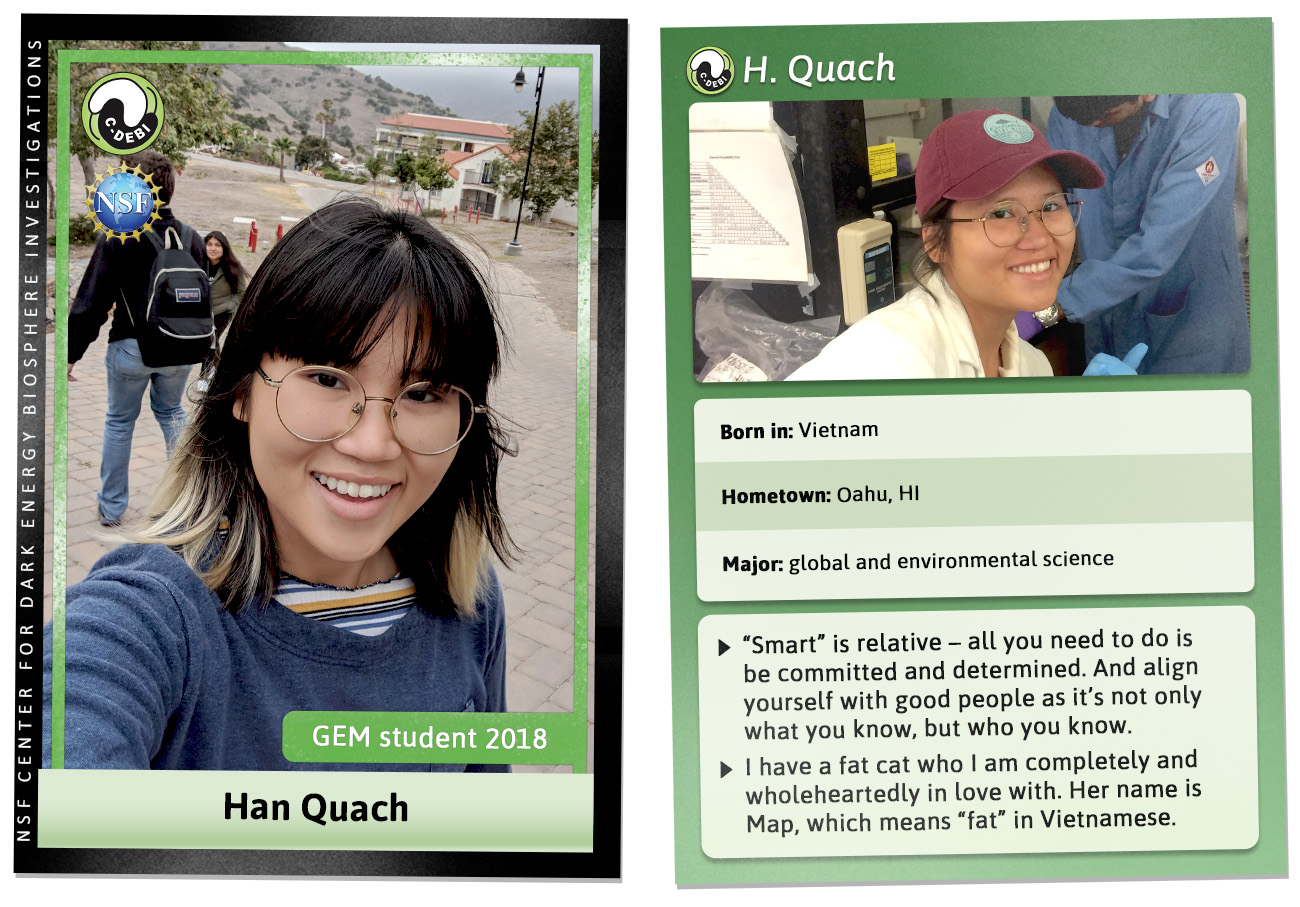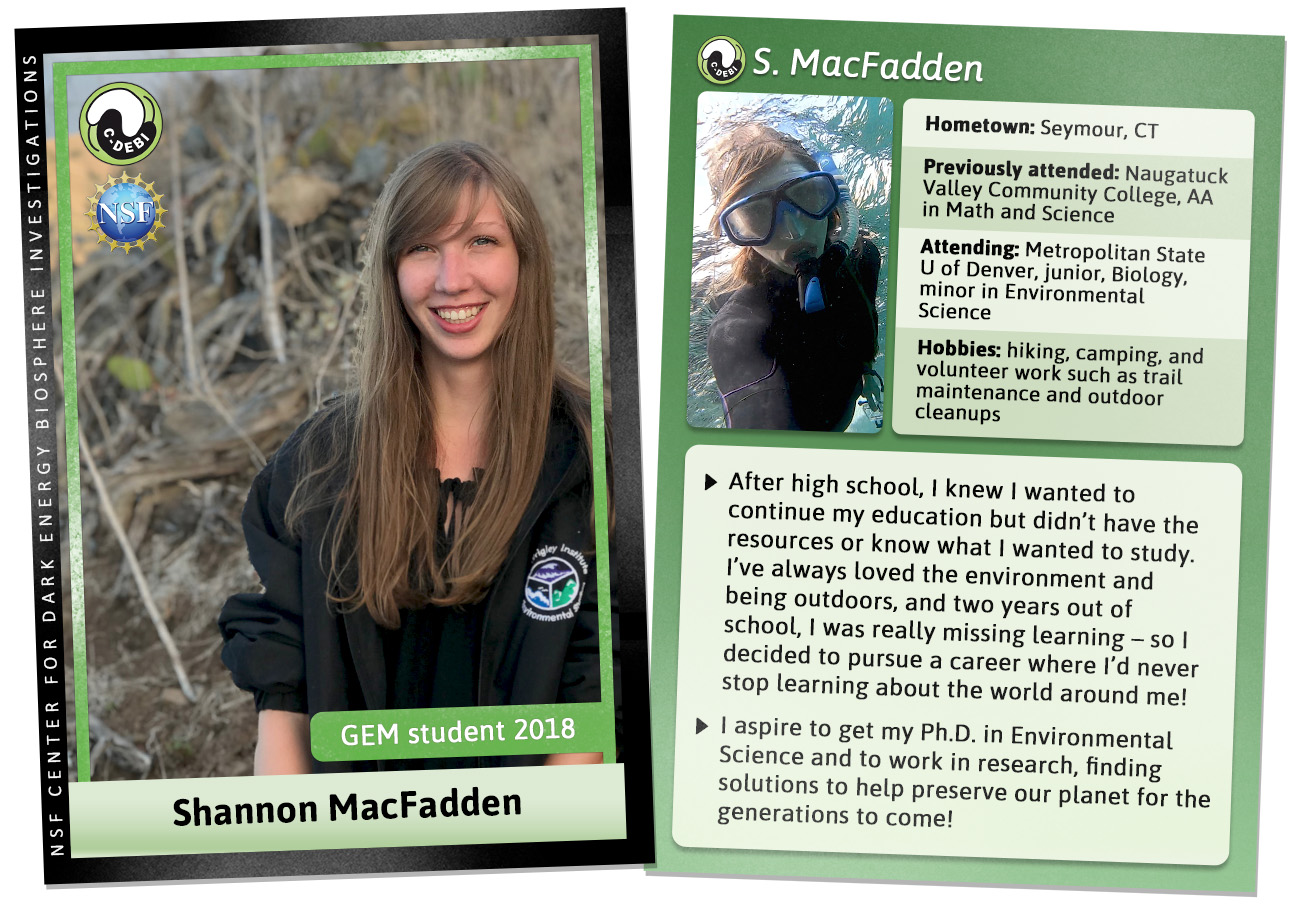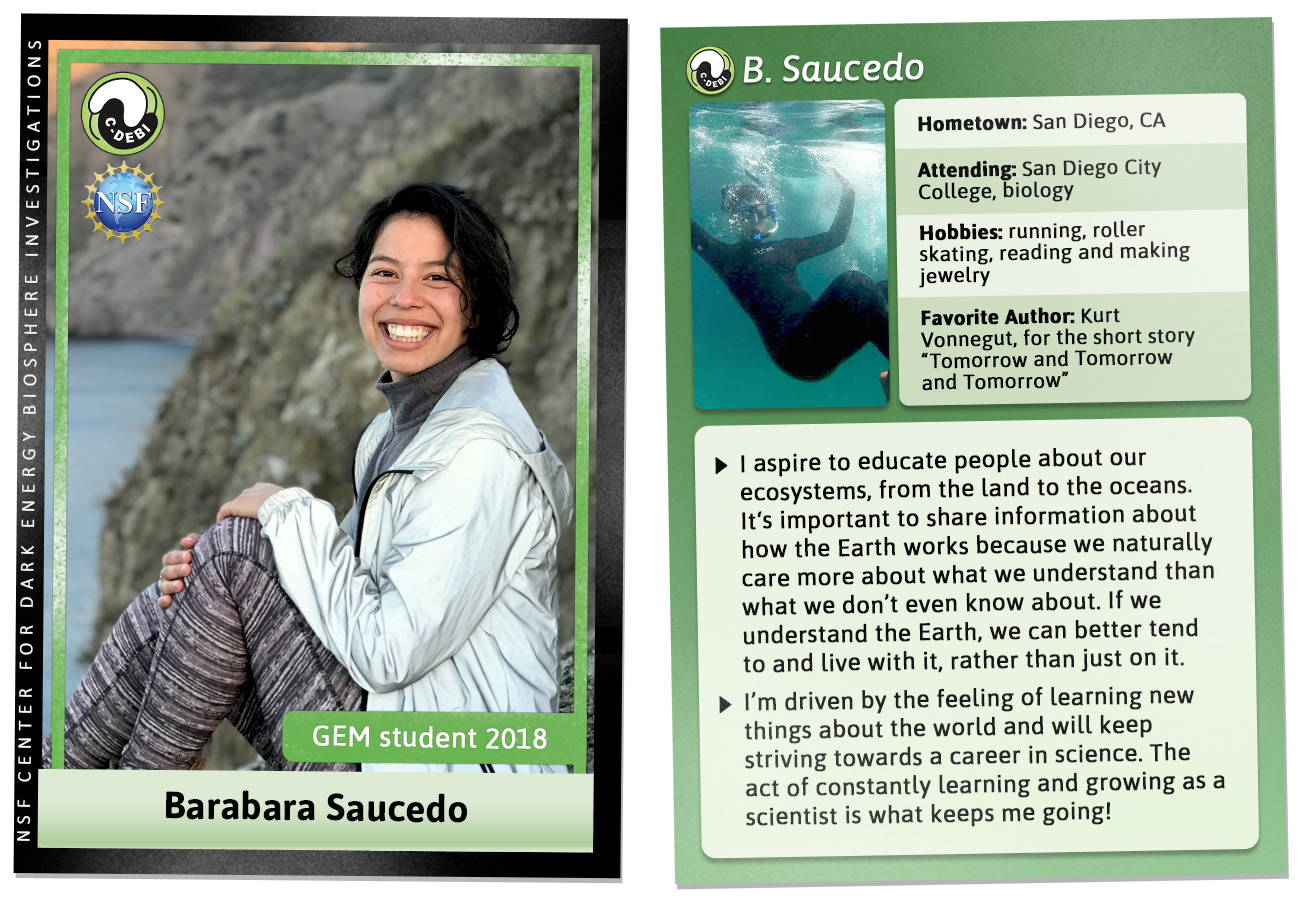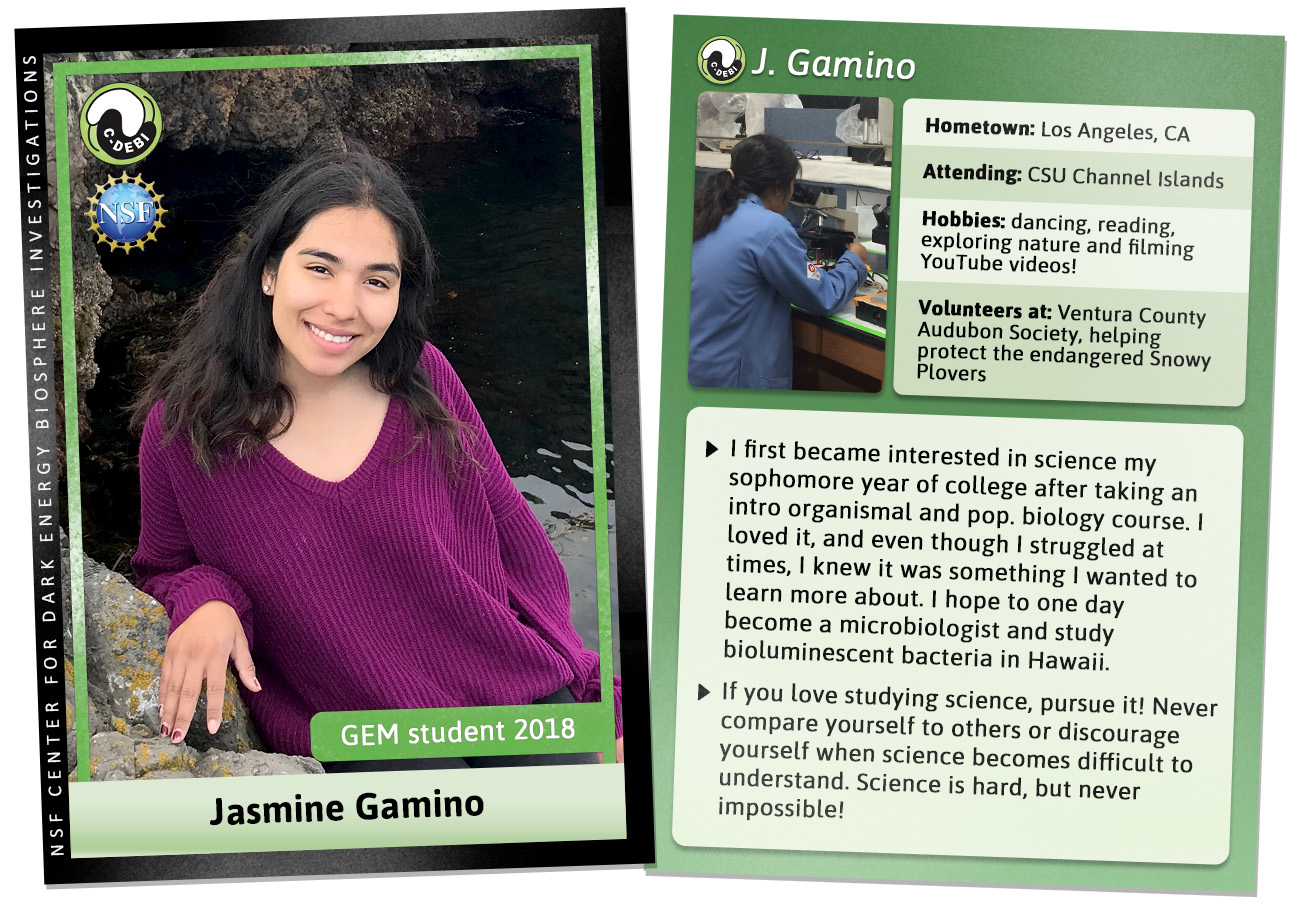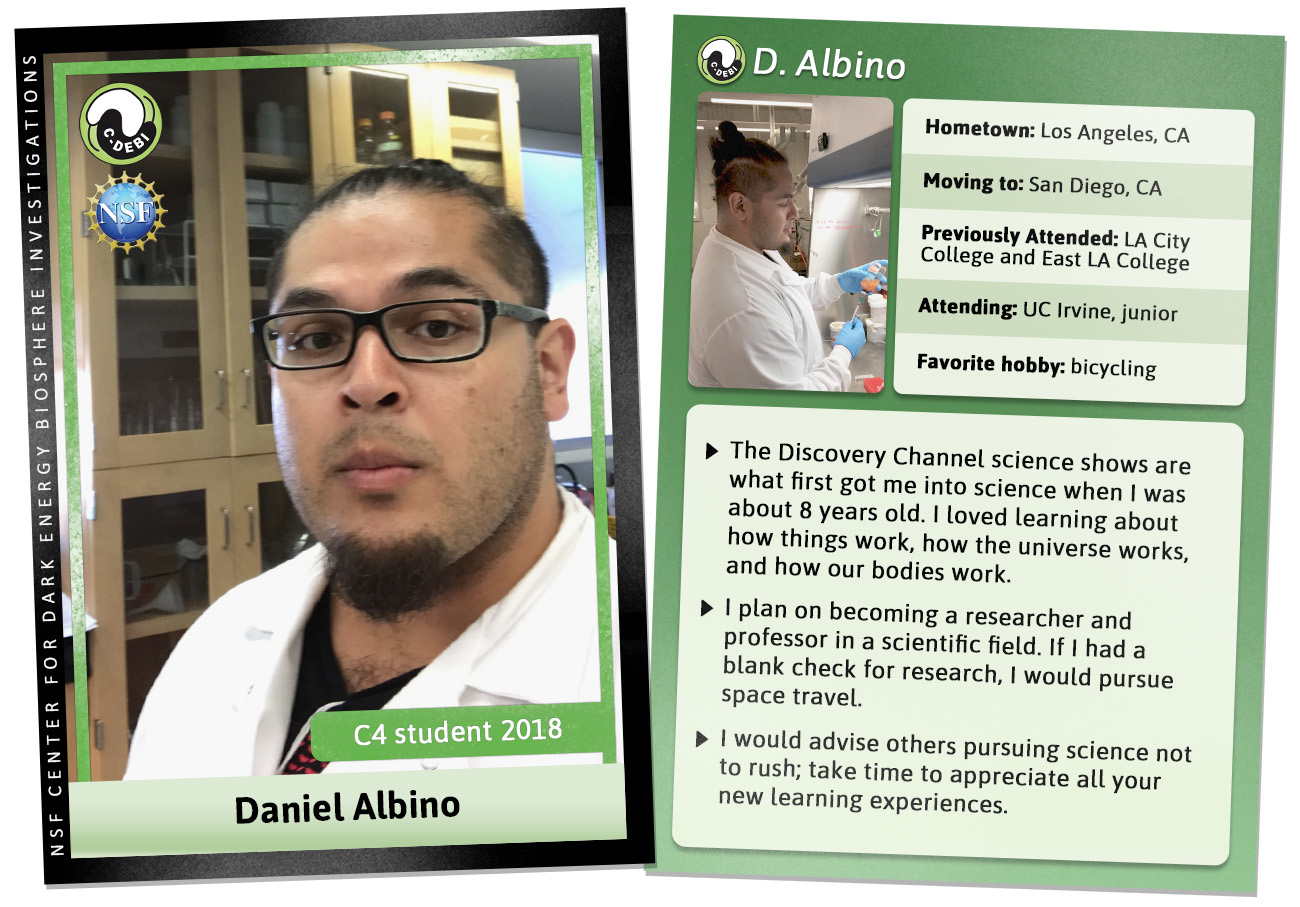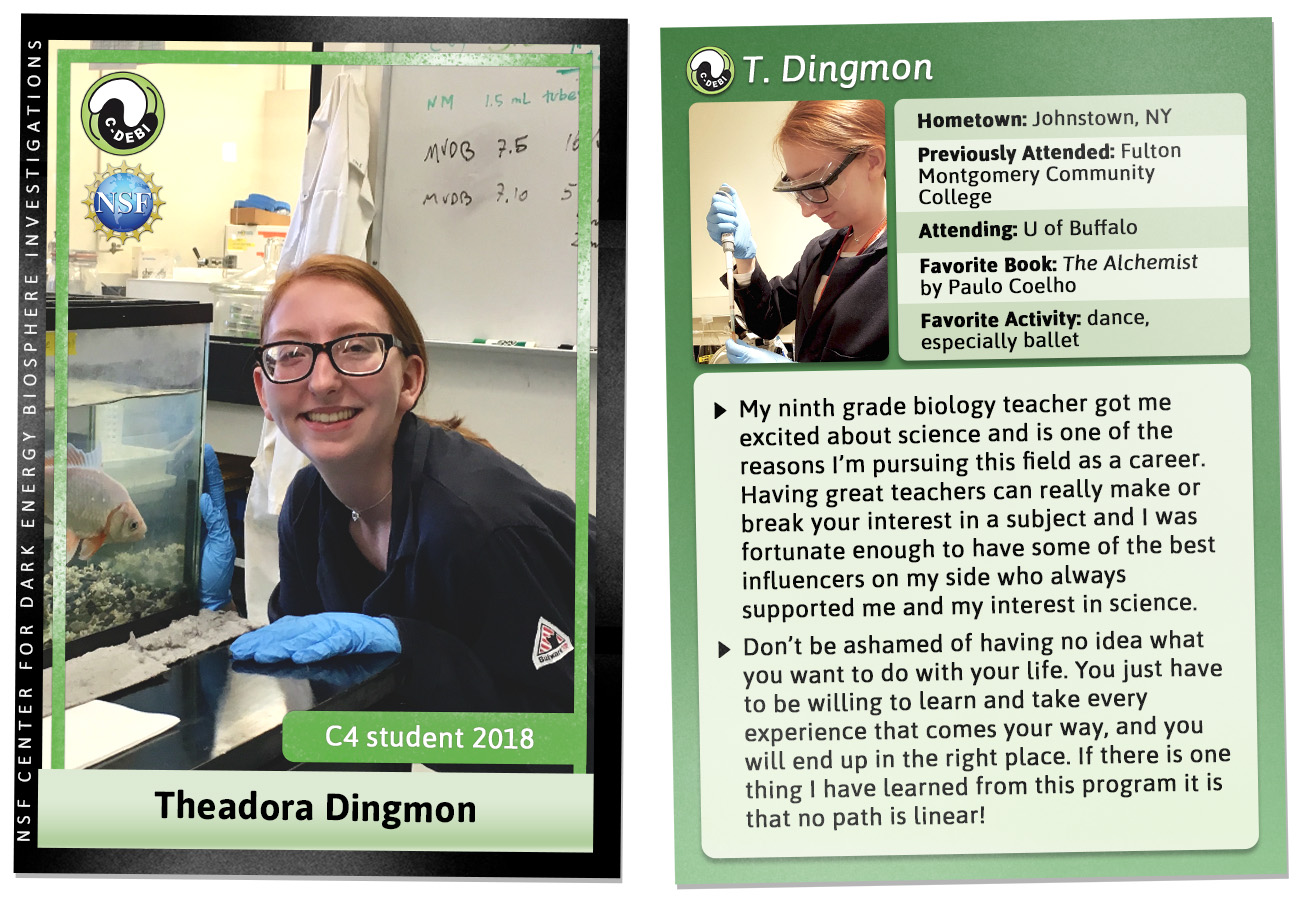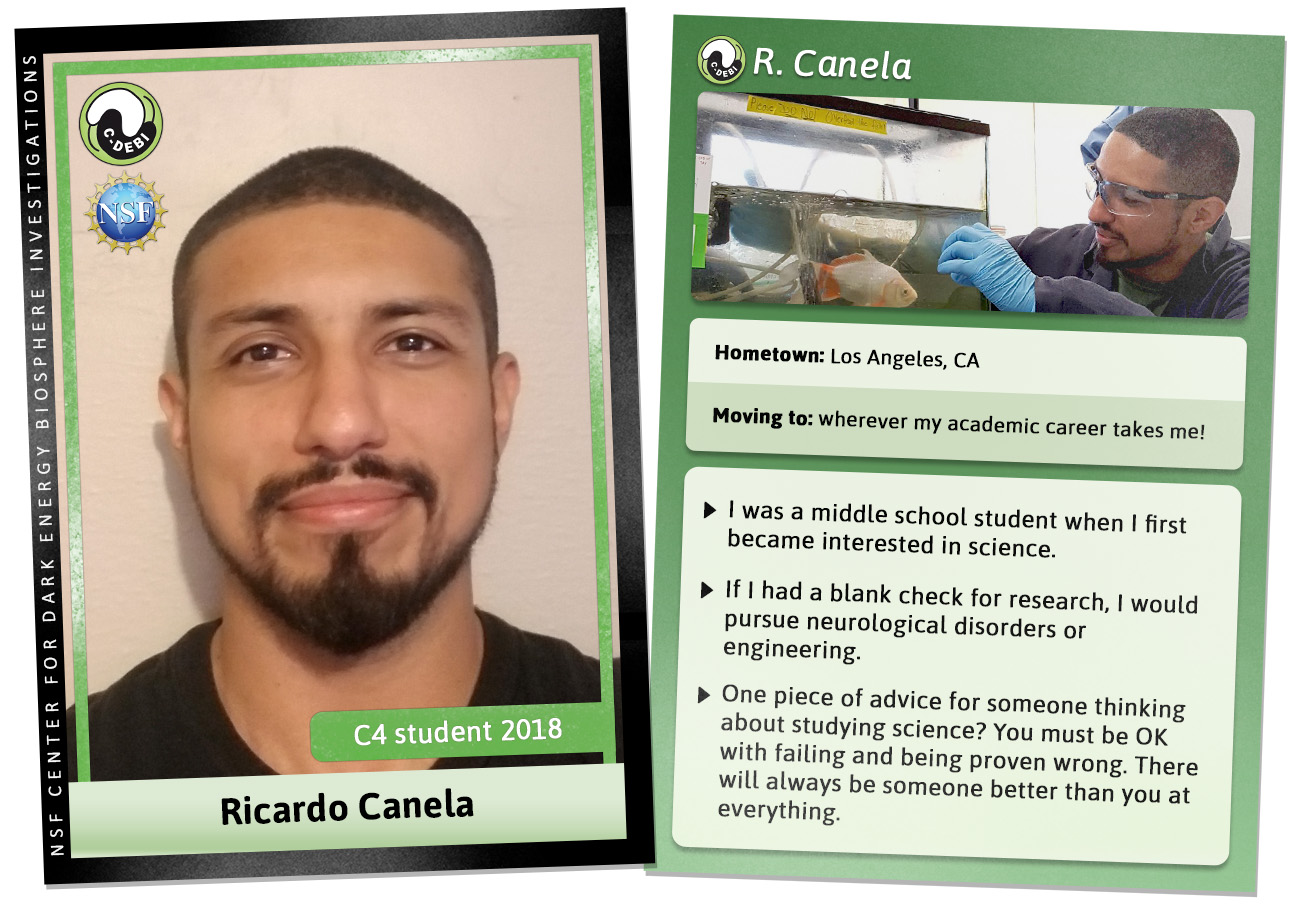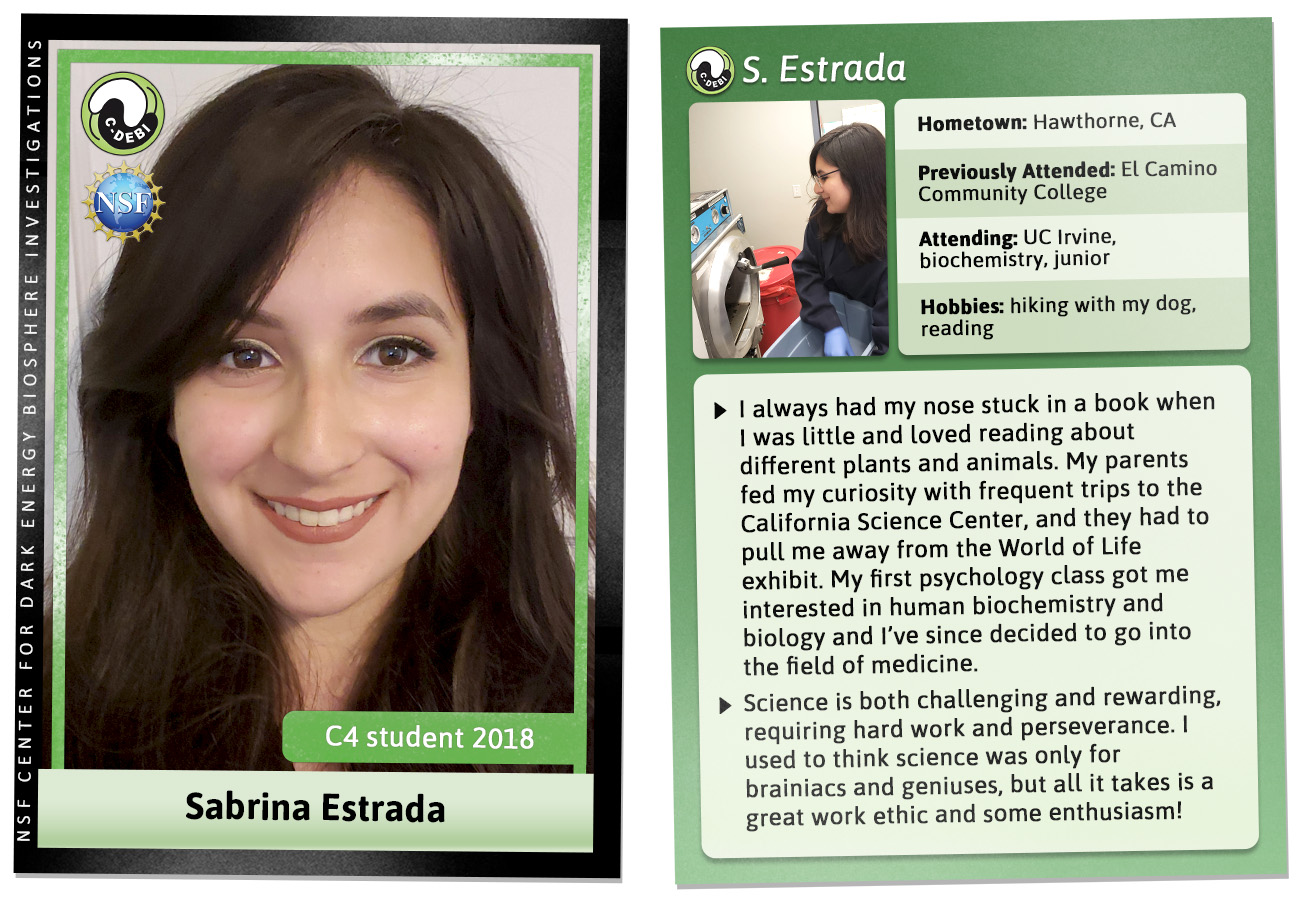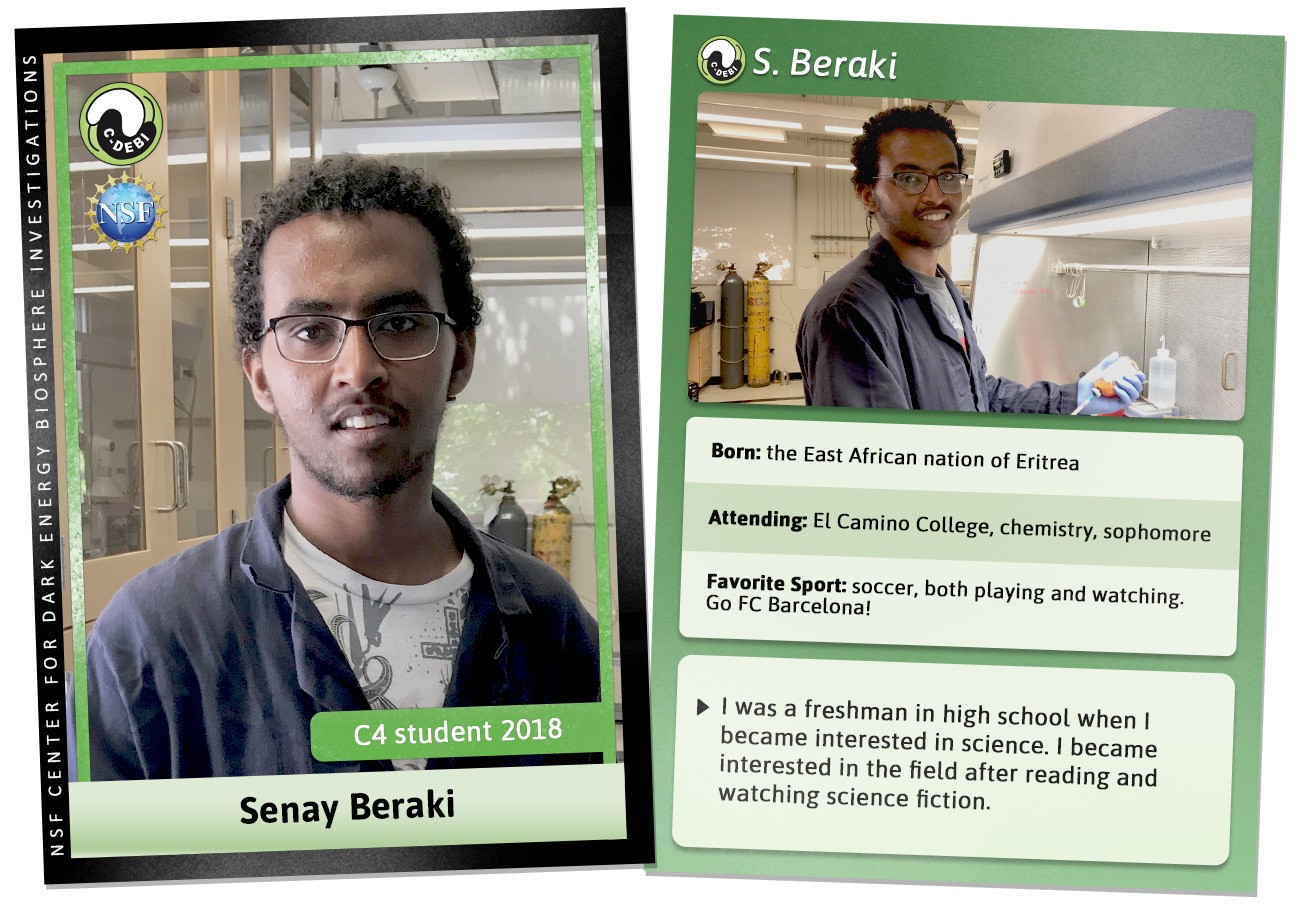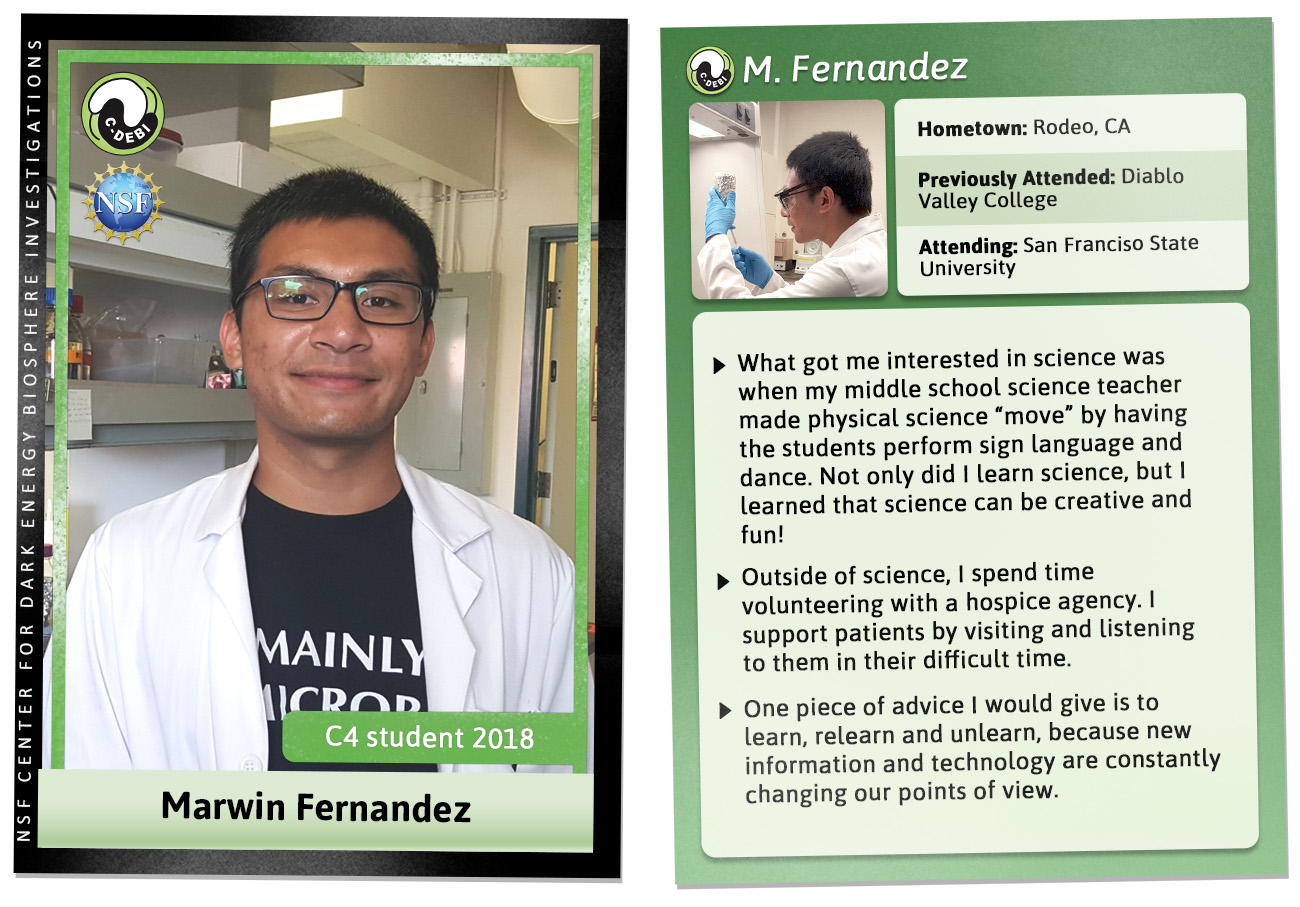Deep Life
We are exploring the frontier of the "deep biosphere" - microbial life in the rocks and sediments that makes up 70% of our planet's surface.
Background: Microbes "rust the crust" at Loihi Seamount (courtesy ROV JASON / WHOI)
Novel Organisms
This previously unknown bacillus living 342 meters below the ocean floor is one of very few isolated from the subseafloor crust.
Studying these organisms will reveal important, novel, and basic insights into the unique metabolic features of microbes in the deep biosphere.
Studying these organisms will reveal important, novel, and basic insights into the unique metabolic features of microbes in the deep biosphere.


Left: Novel Bacillus cells producing spores and right: actively growing (scanning electron microscope (SEM) image courtesy Lily Momper / USC).
Background: Core samples from IODP Leg 206 (photo credit: IODP-USIO).
It's Slow Growing: Novel Approaches
Visualization methods like "BONCAT" reveal important, novel, and basic insights into the unique metabolic features of microbes in the deep biosphere, as in the slow-growing, archaeal-bacterial consortium anaerobically oxidizing methane in deep sea sediments pictured here.

DAPI (DNA) BONCAT (new proteins) FISH (16s RNA) Bar: 10μM
Figure: Hatzenpichler et al. 2016, Proceedings of the National Academy of Sciences.
Global Implications
About 0.6% of Earth's total living biomass is in subseafloor sediments. This finding updates previous estimates made in 1998.

Figure: Kallmeyer et al. 2012, Proceedings of the National Academy of Sciences.
Science & Technology
We require specialized technologies to collect and analyze samples from the deep biosphere, including sensors, samplers, and platforms, deep-sea submersibles, scientific drilling research ships, and ROVs (remotely operated vehicles).

Above: HOV Alvin samples a hydrothermal vent (photo credit: WHOI). Background: Scientific drilling ship JOIDES Resolution (photo credit: IODP).
Training & Outreach
Get involved with our education, outreach and diversity opportunities for teachers, K-12, undergraduates, graduate students, and postdoctorals in our quest to train and foster the next generation of deep biosphere researchers.
Background: C-DEBI's undergraduate summer GEM course (photo credit: Ann Close, USC).
